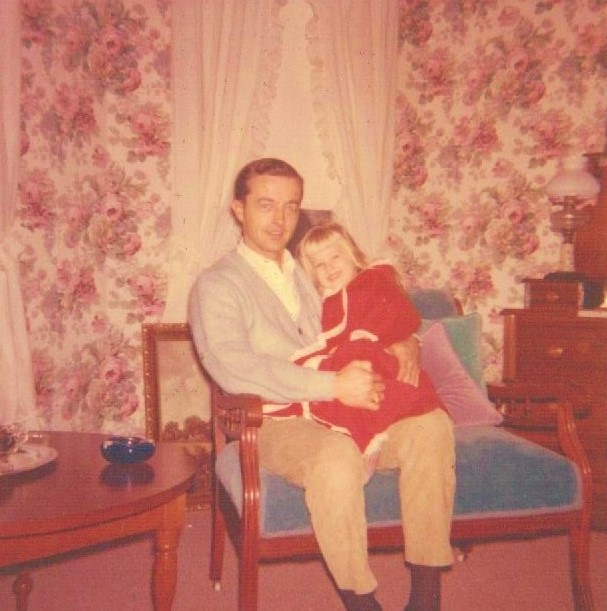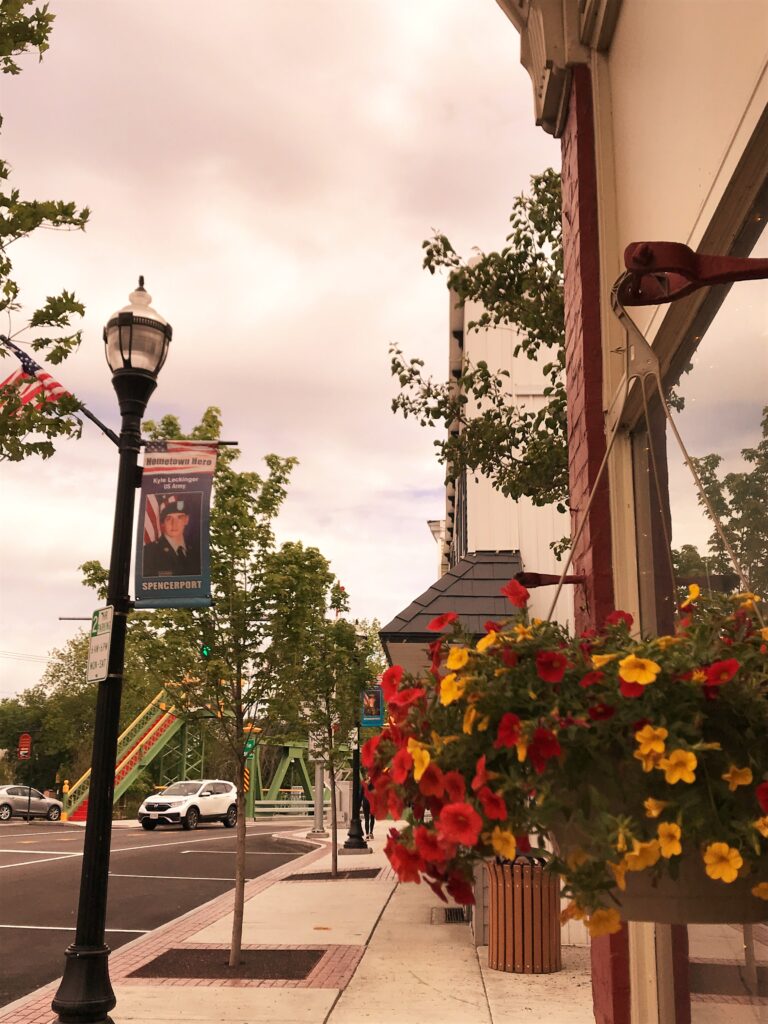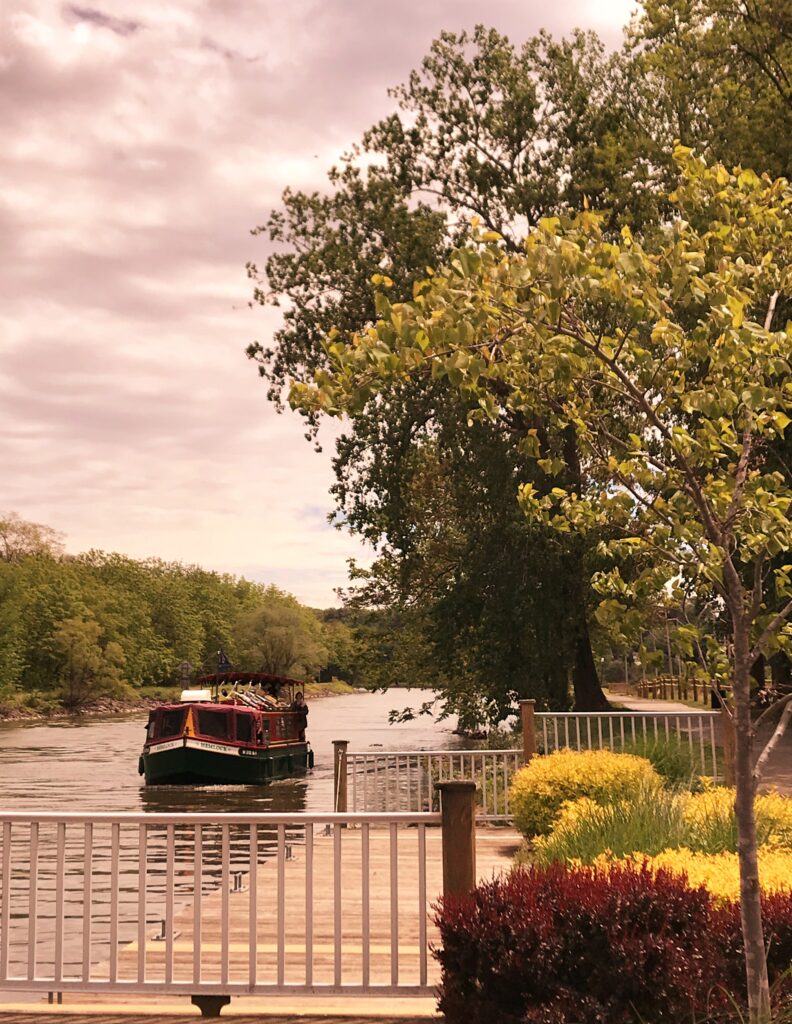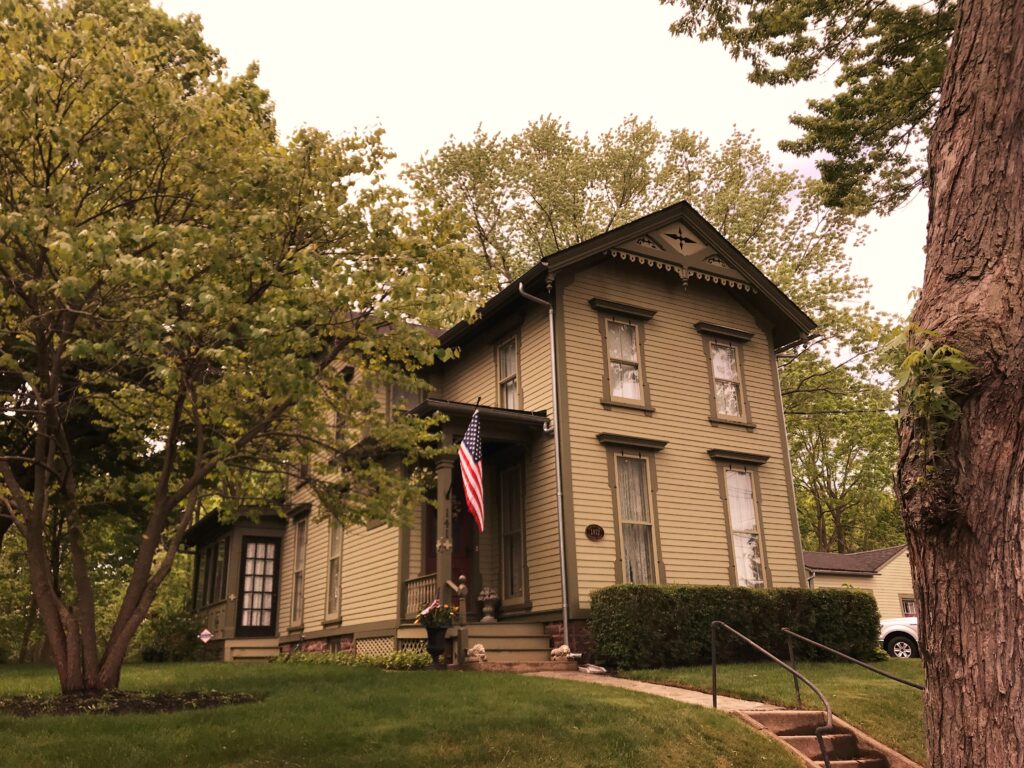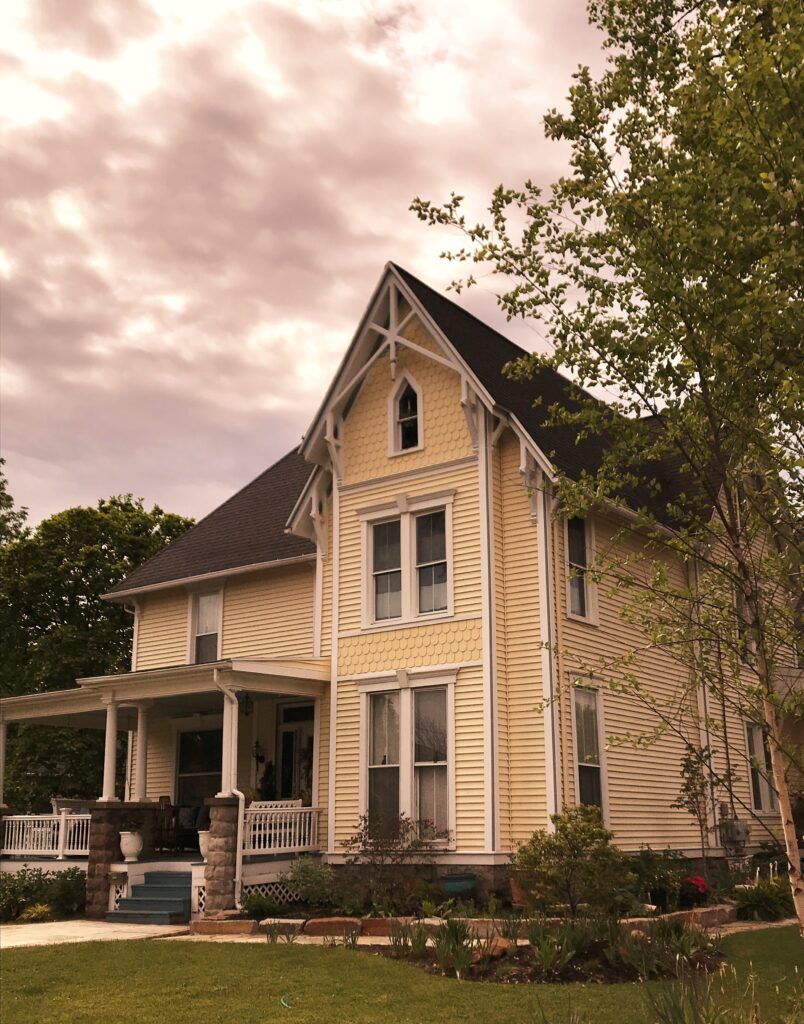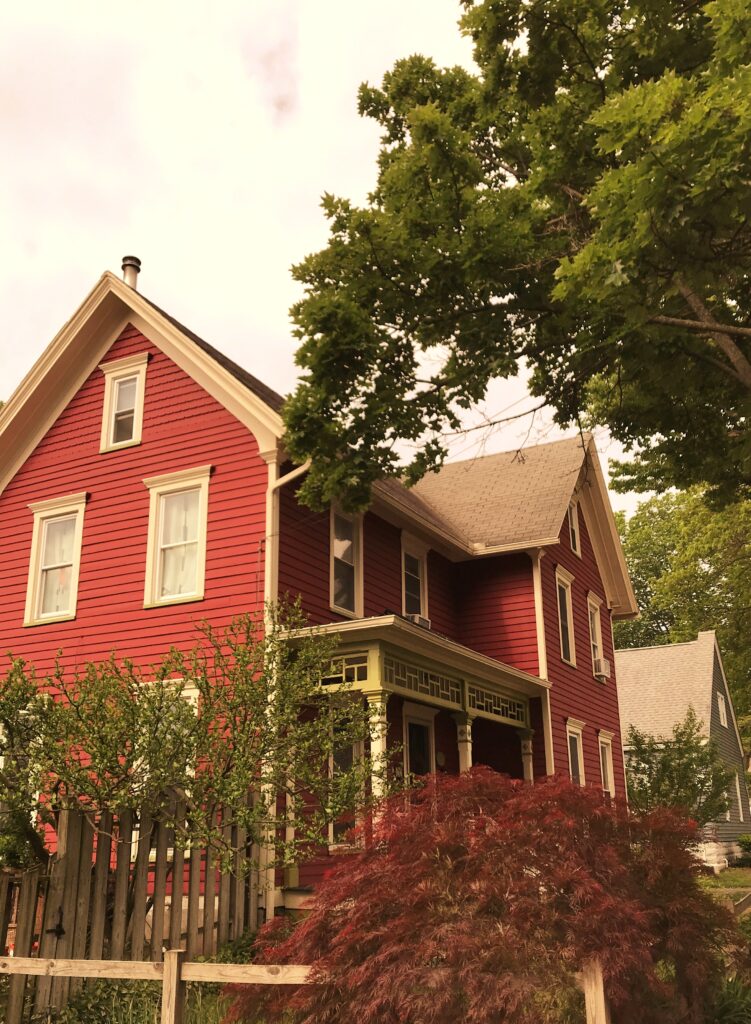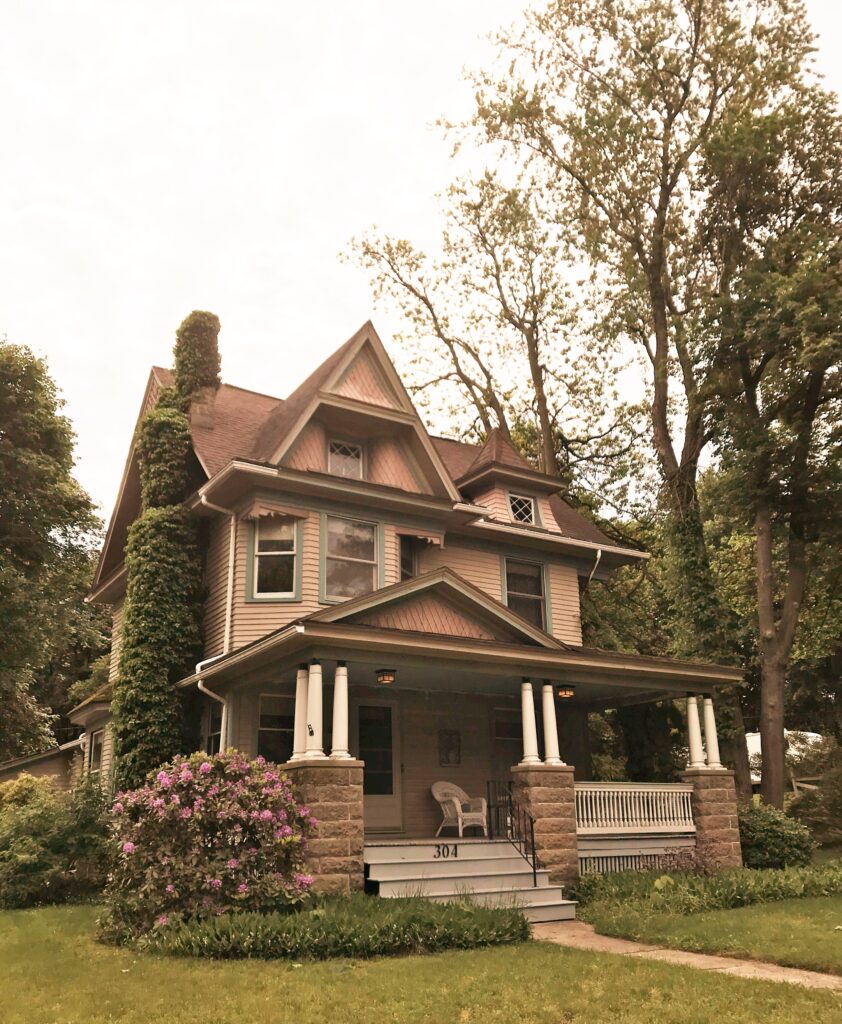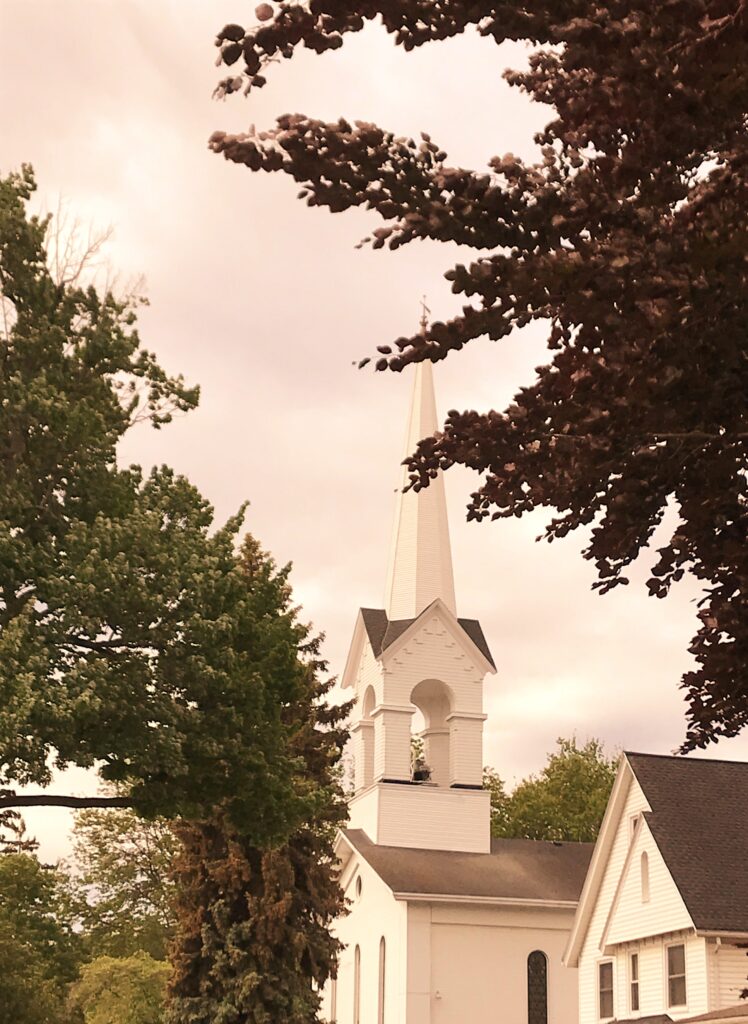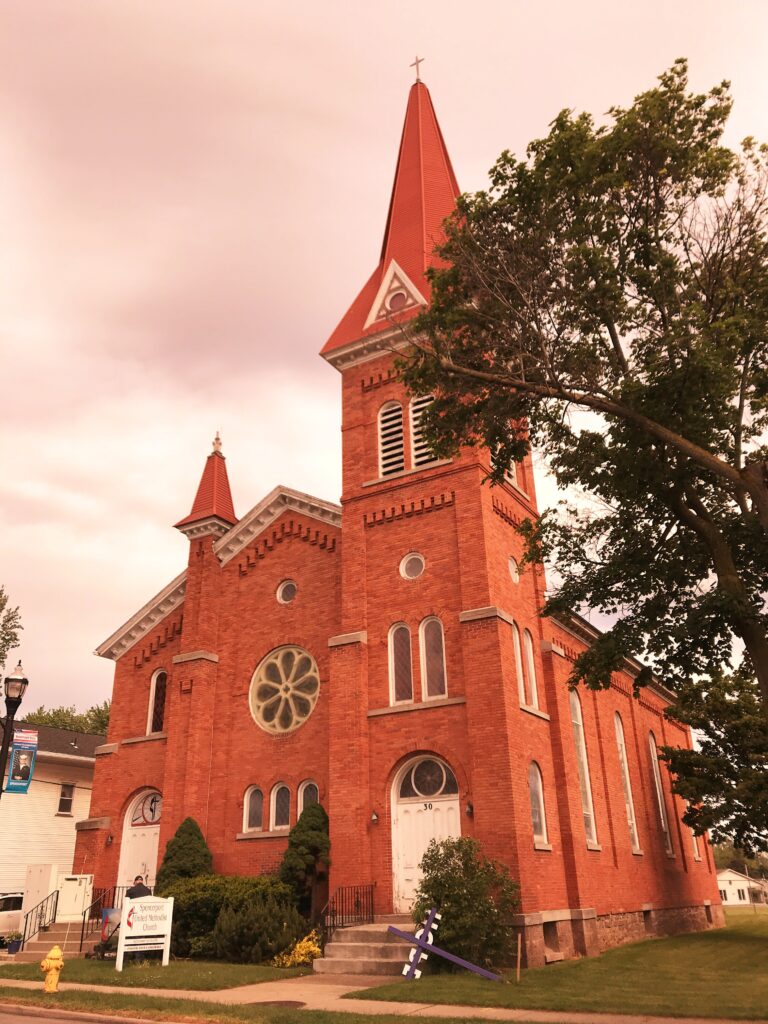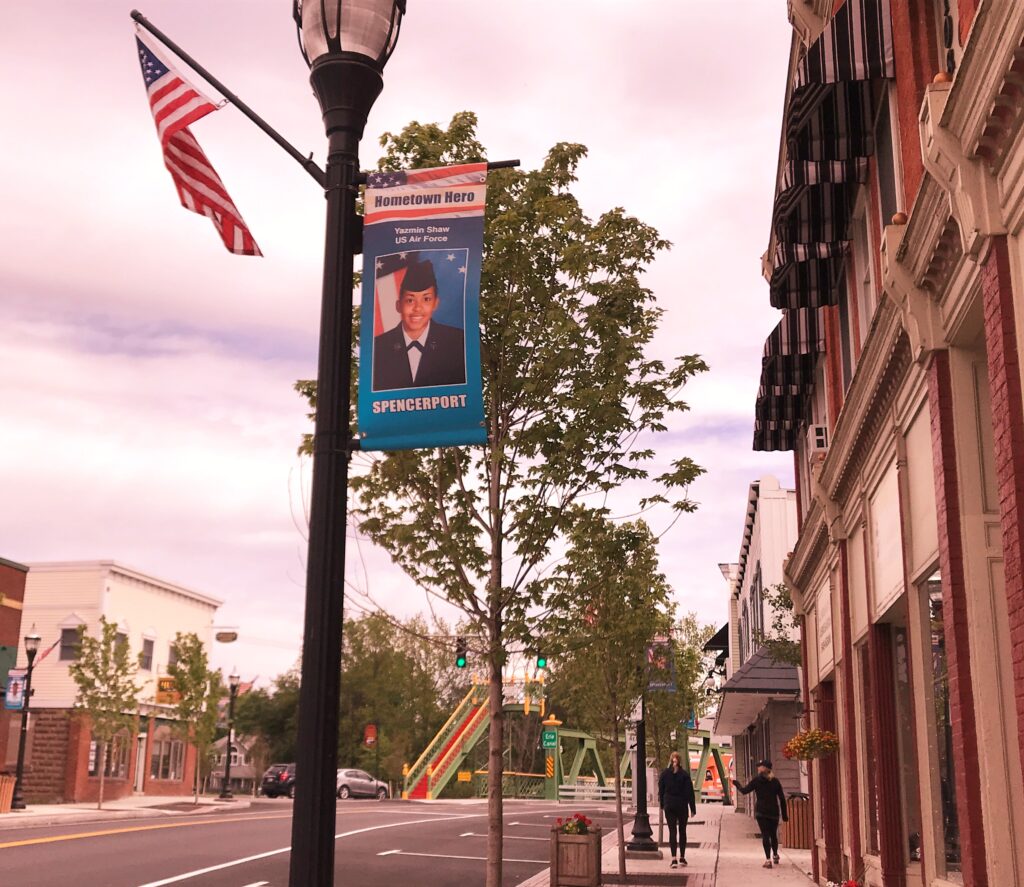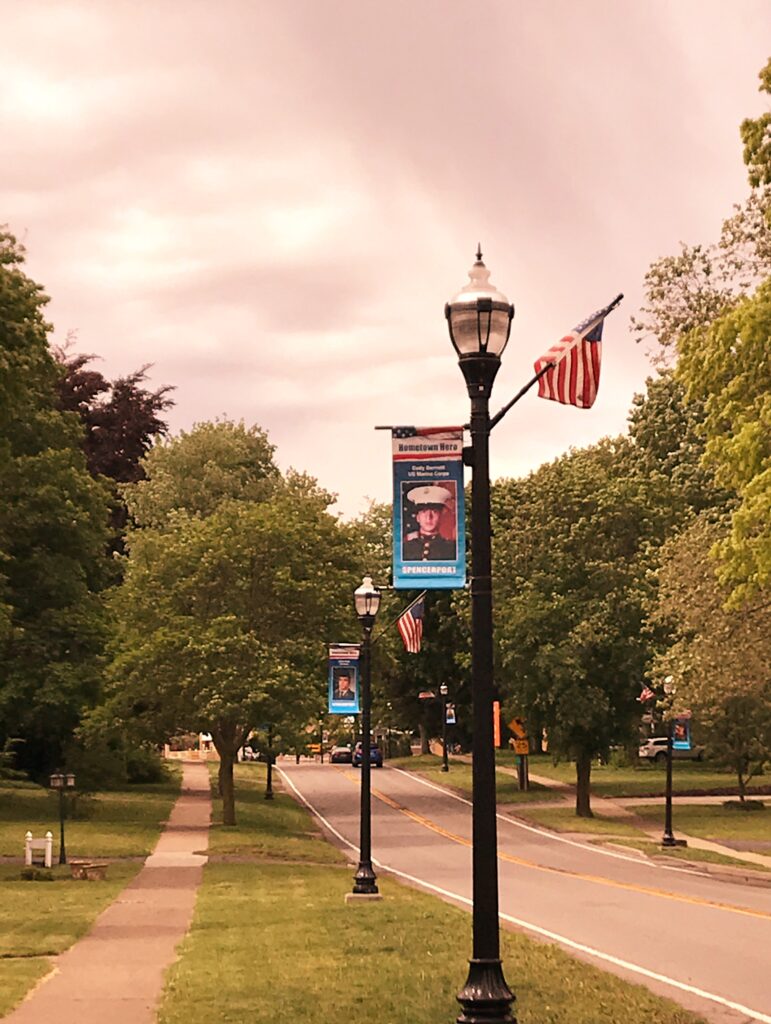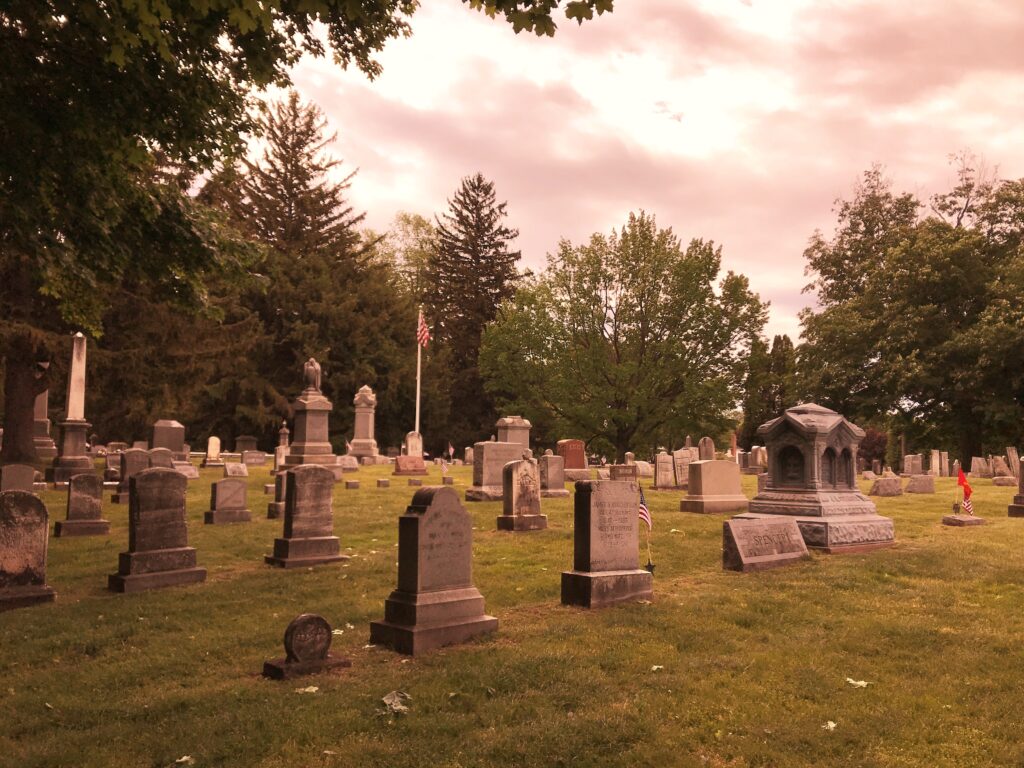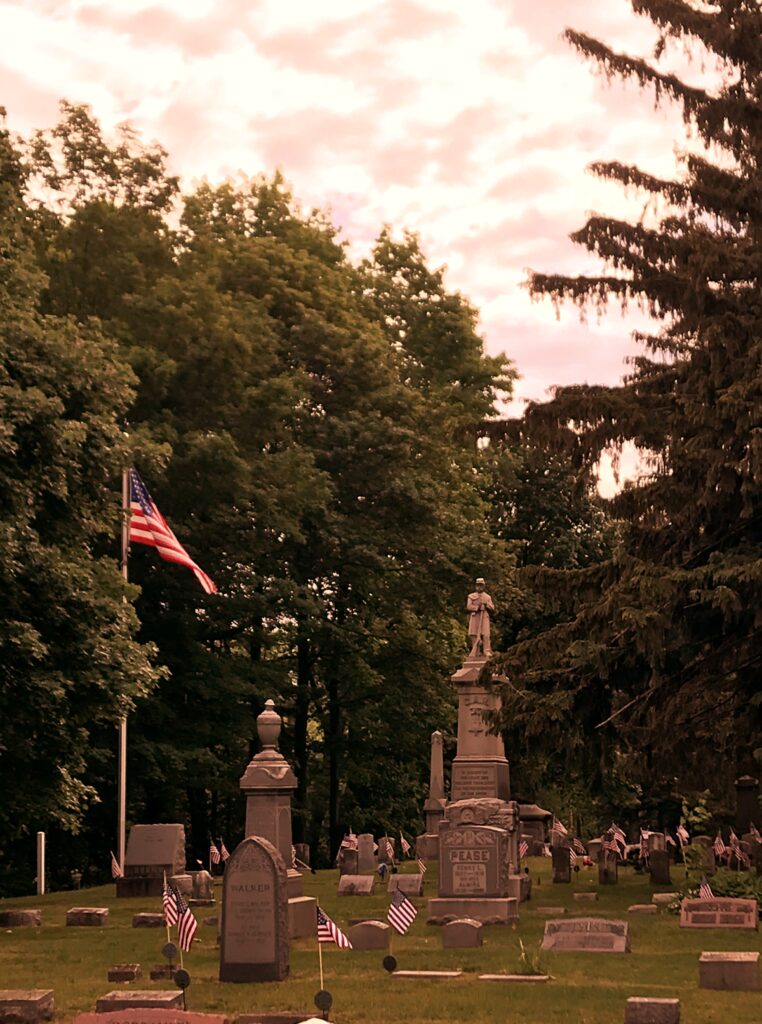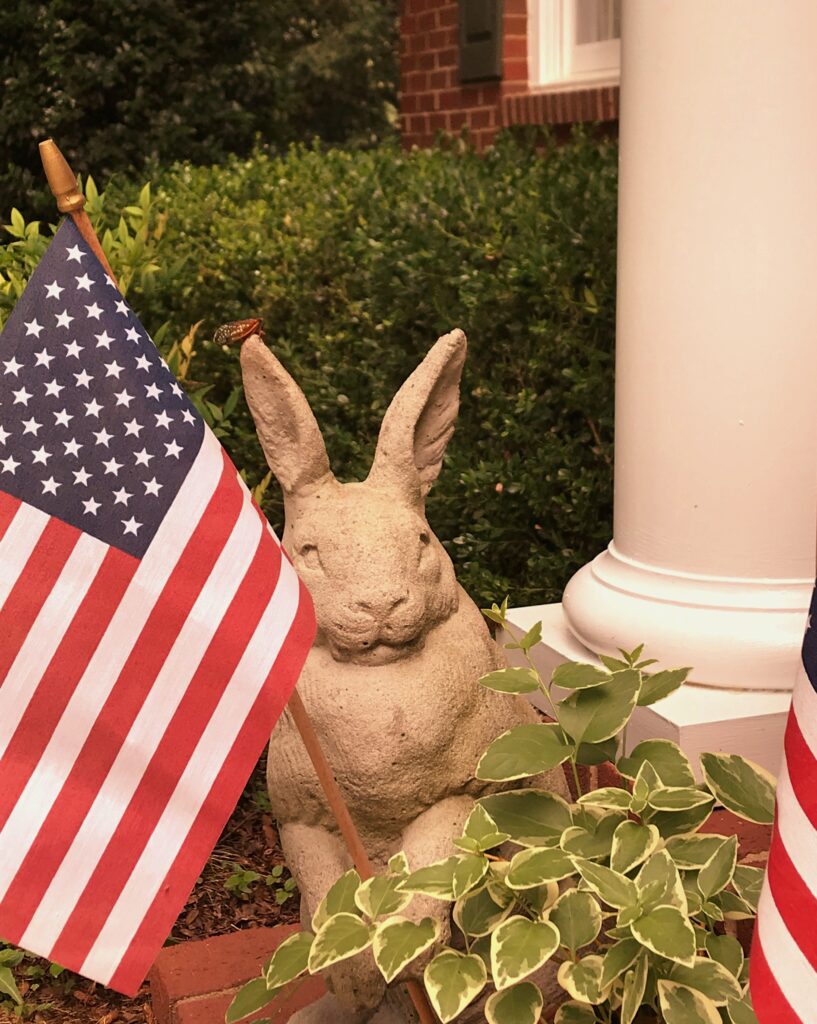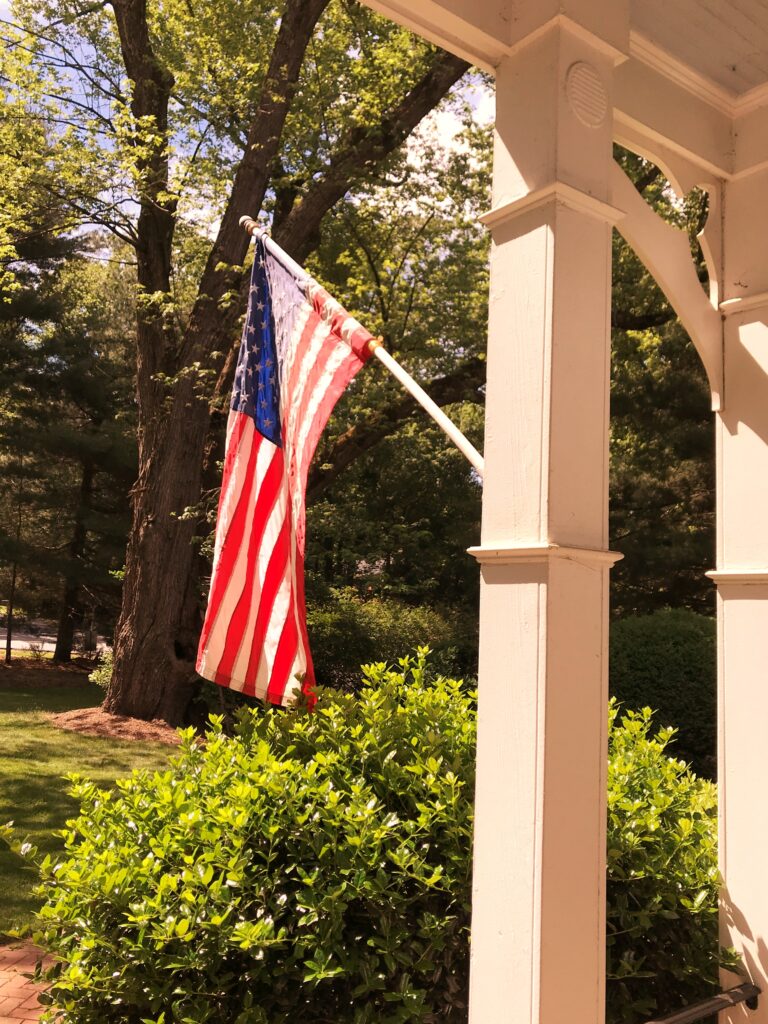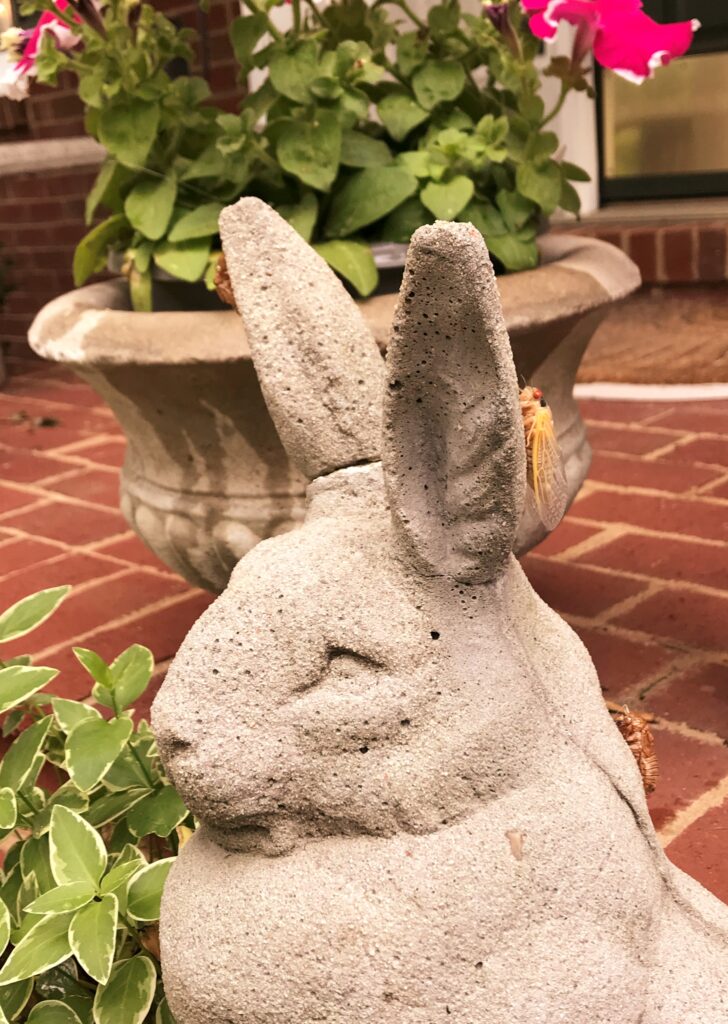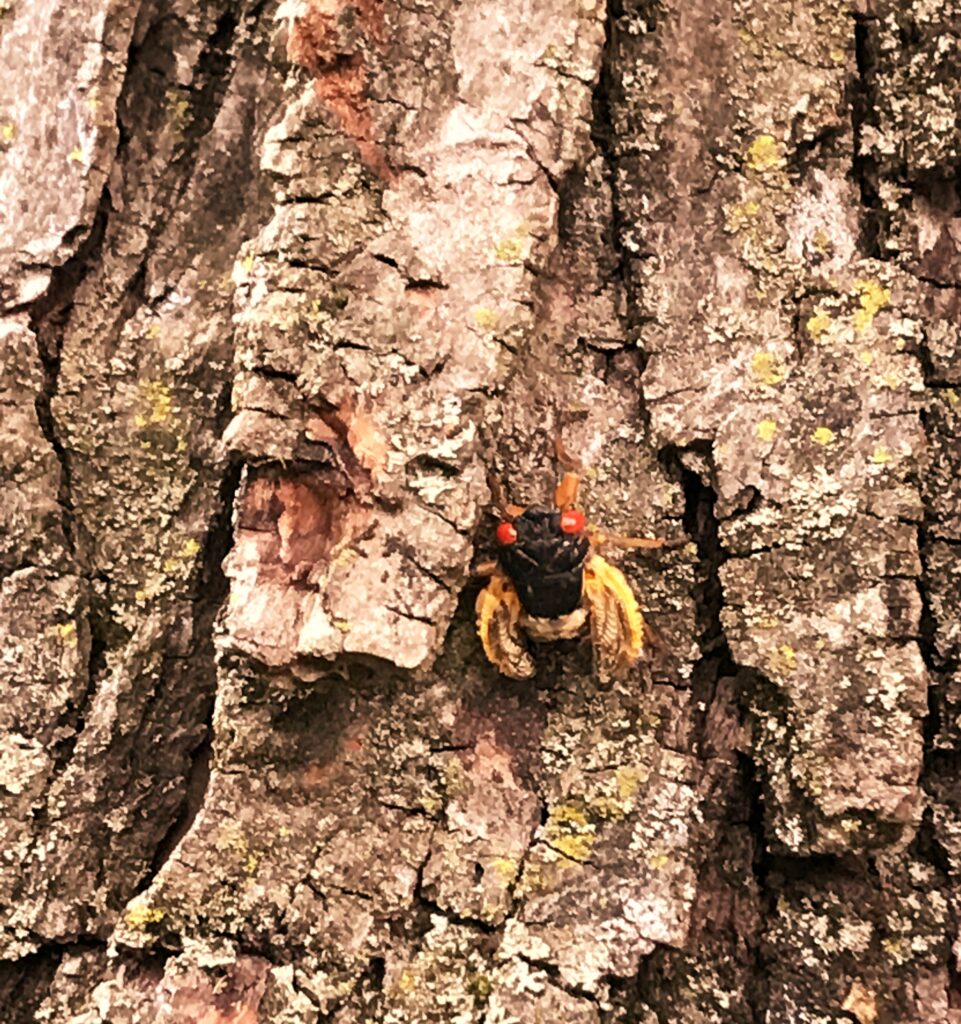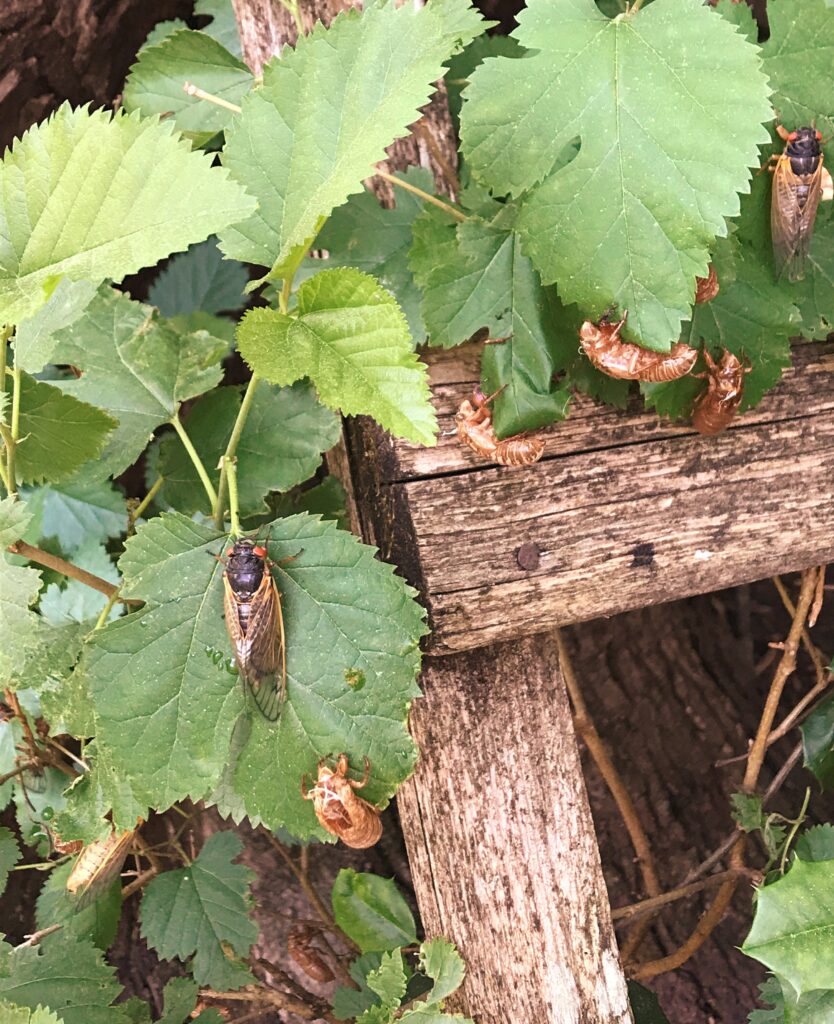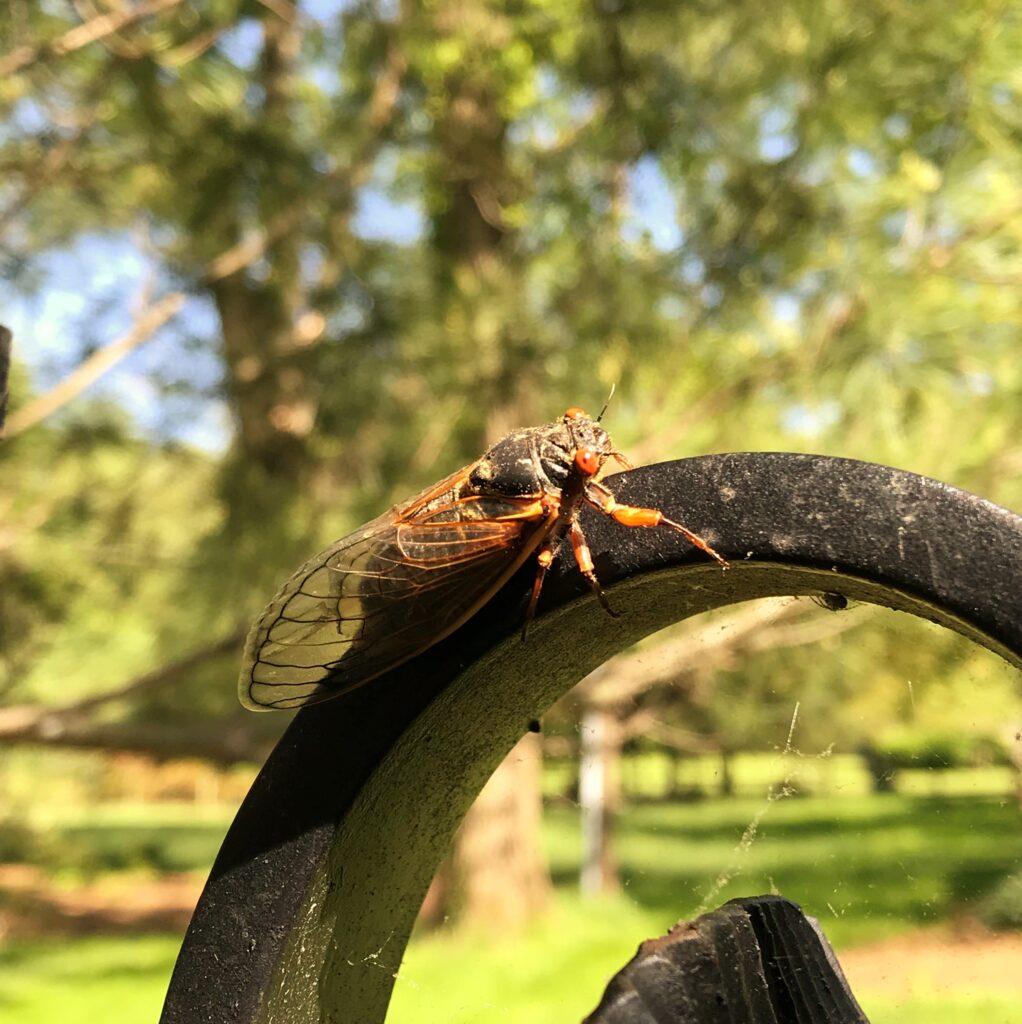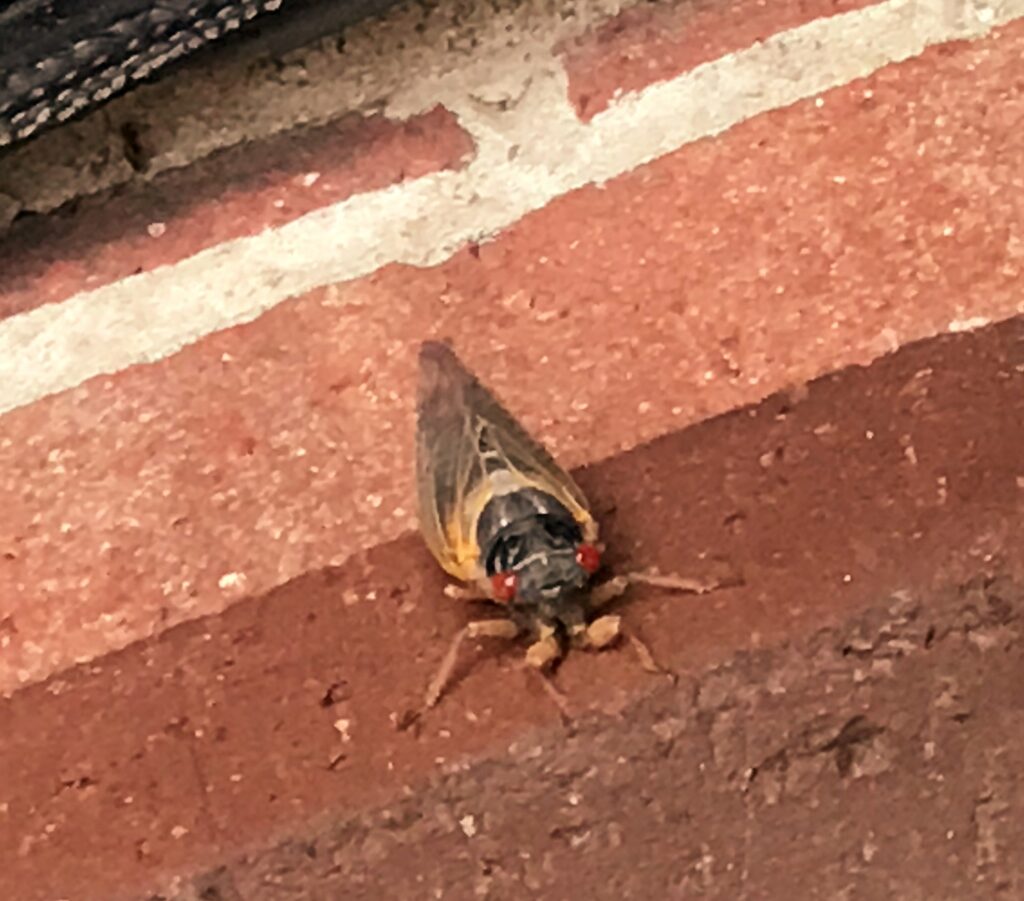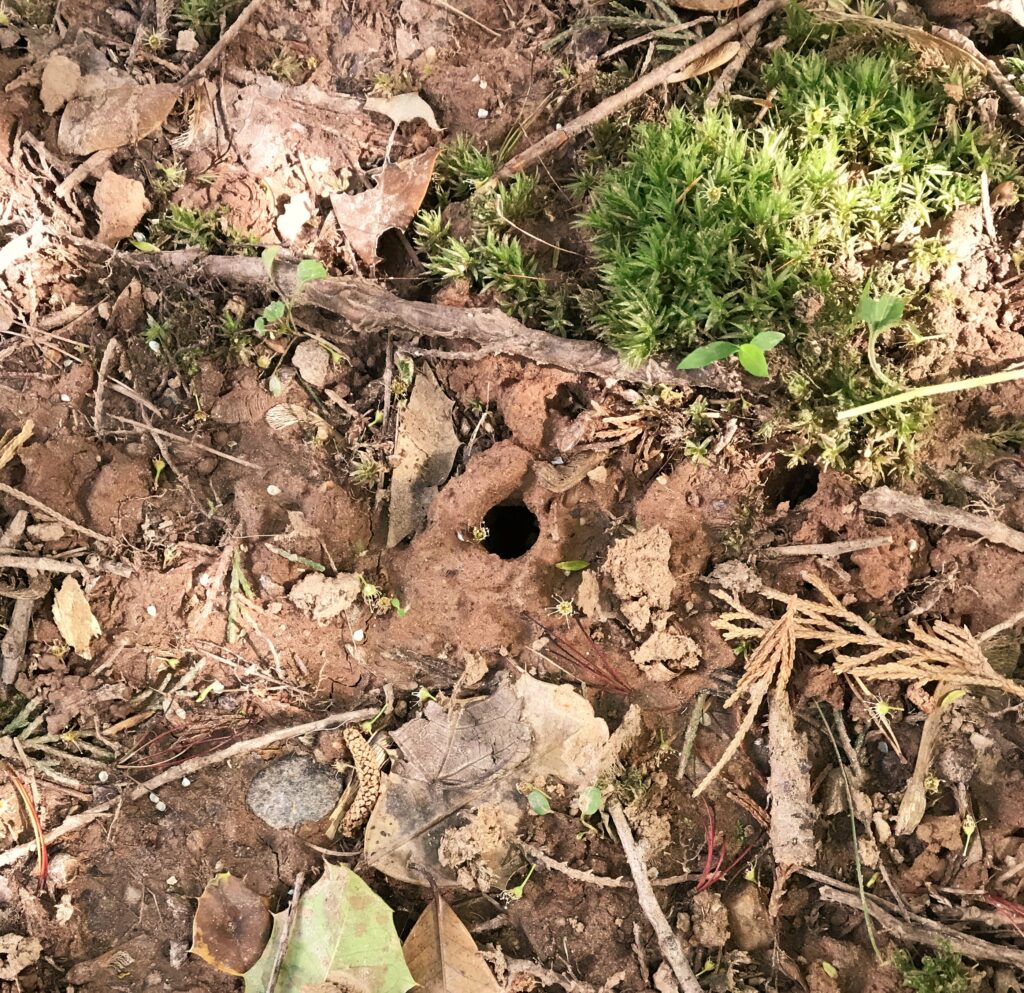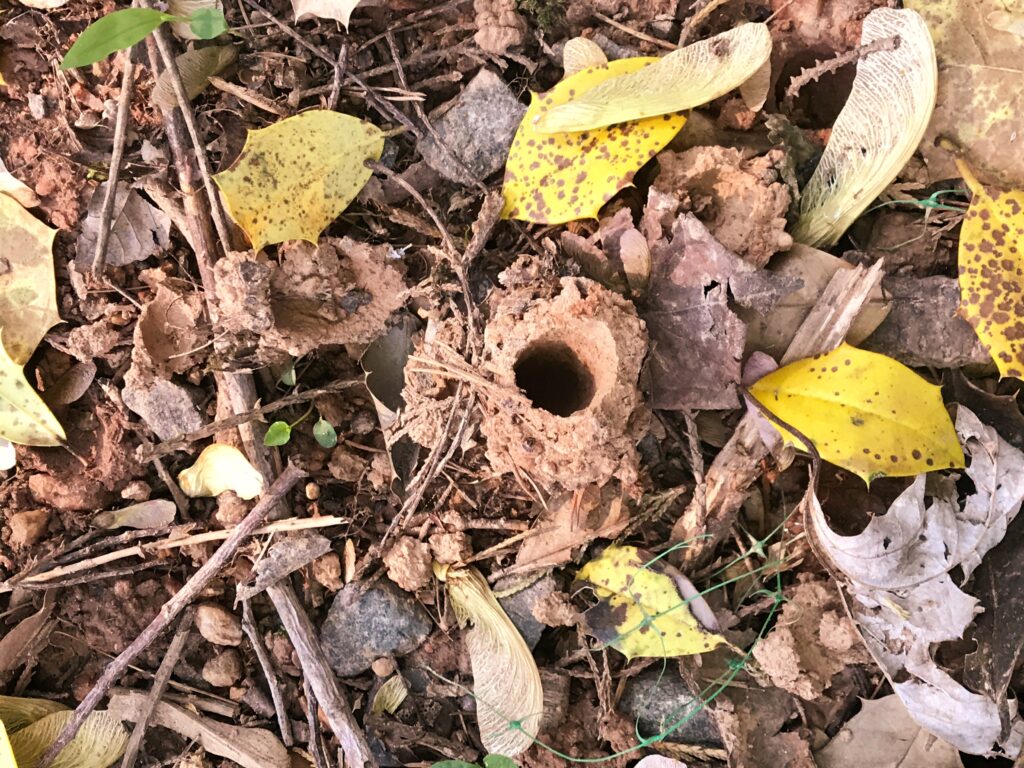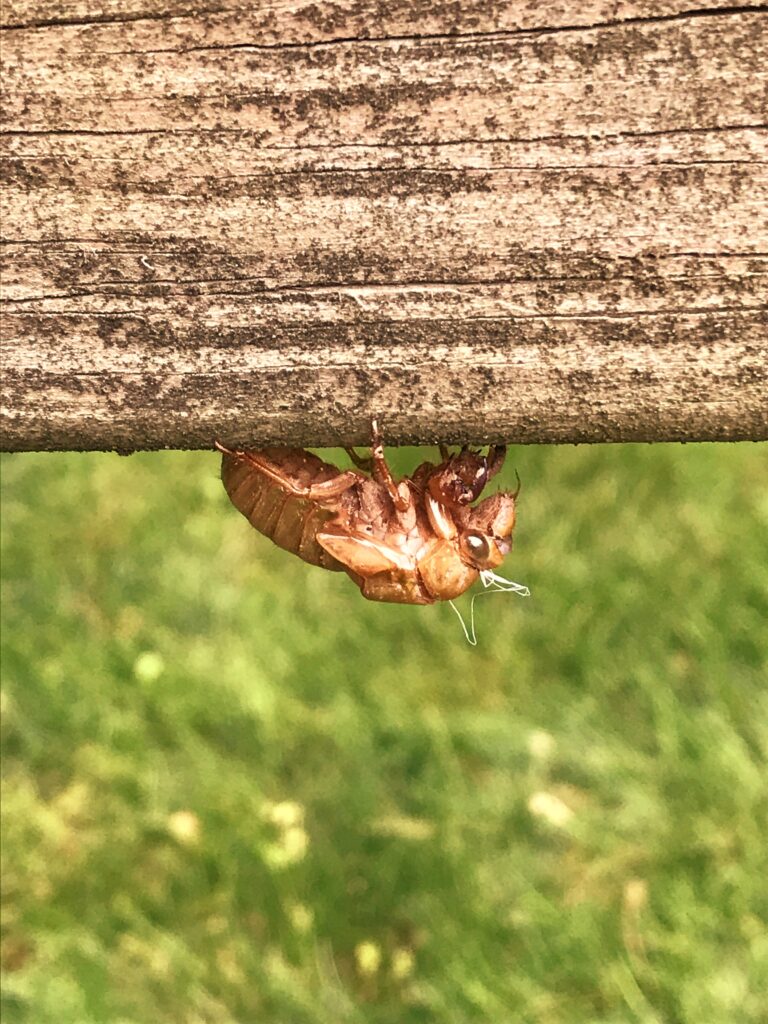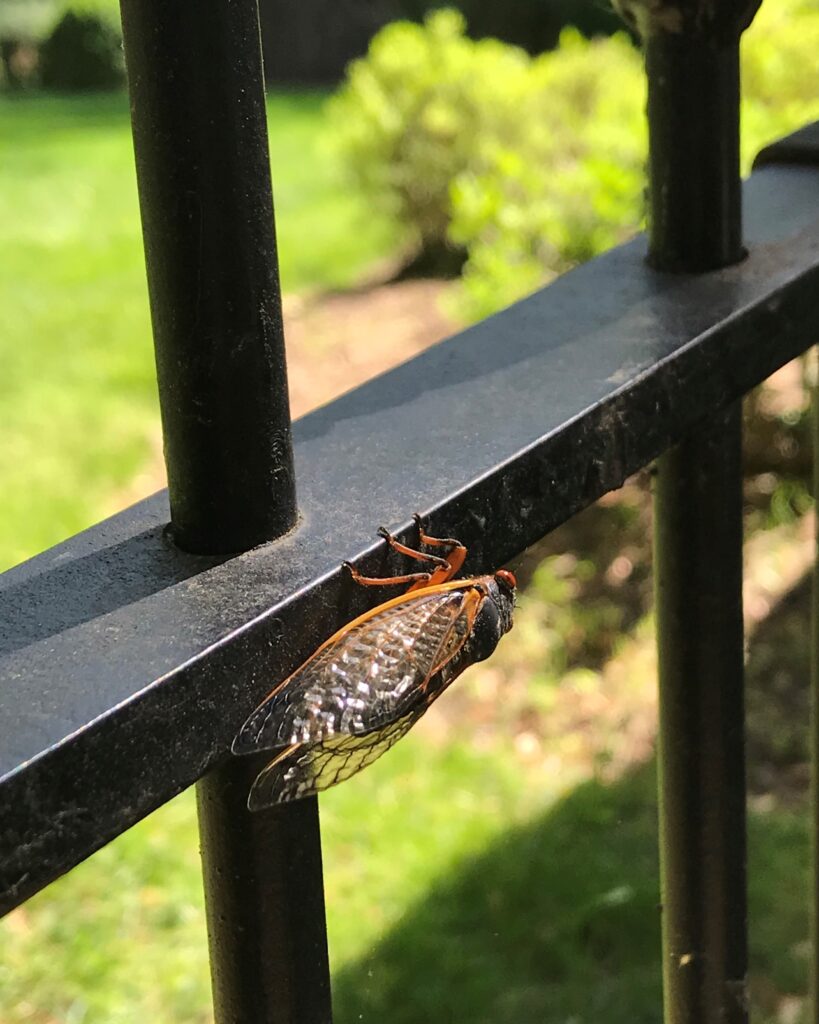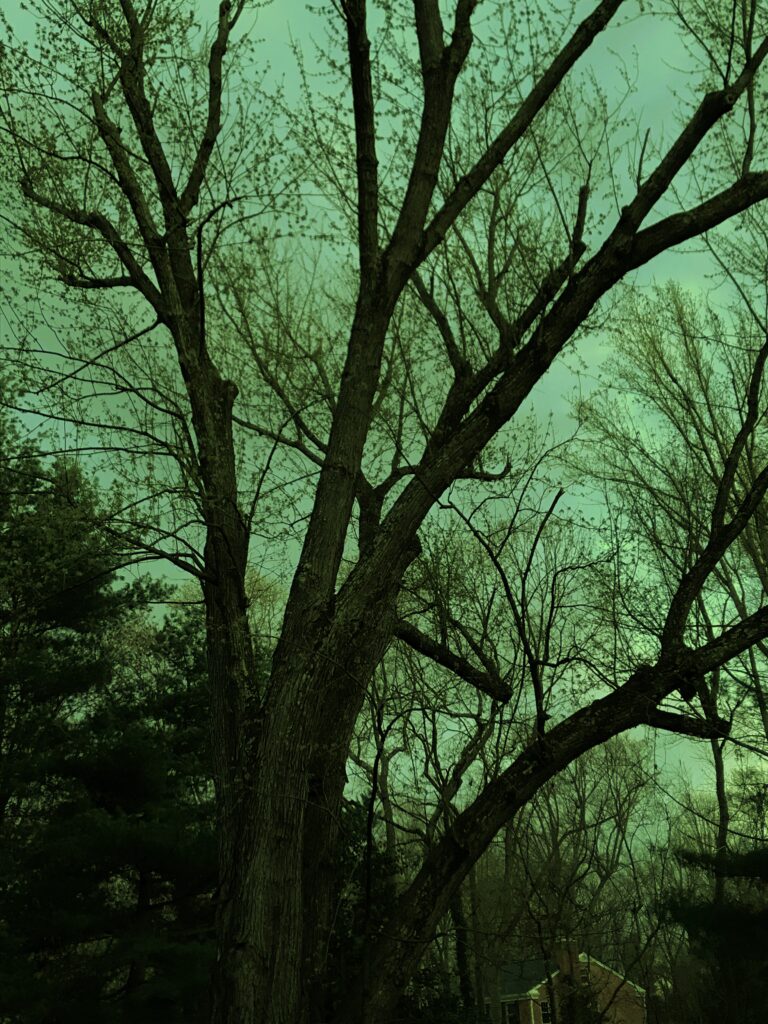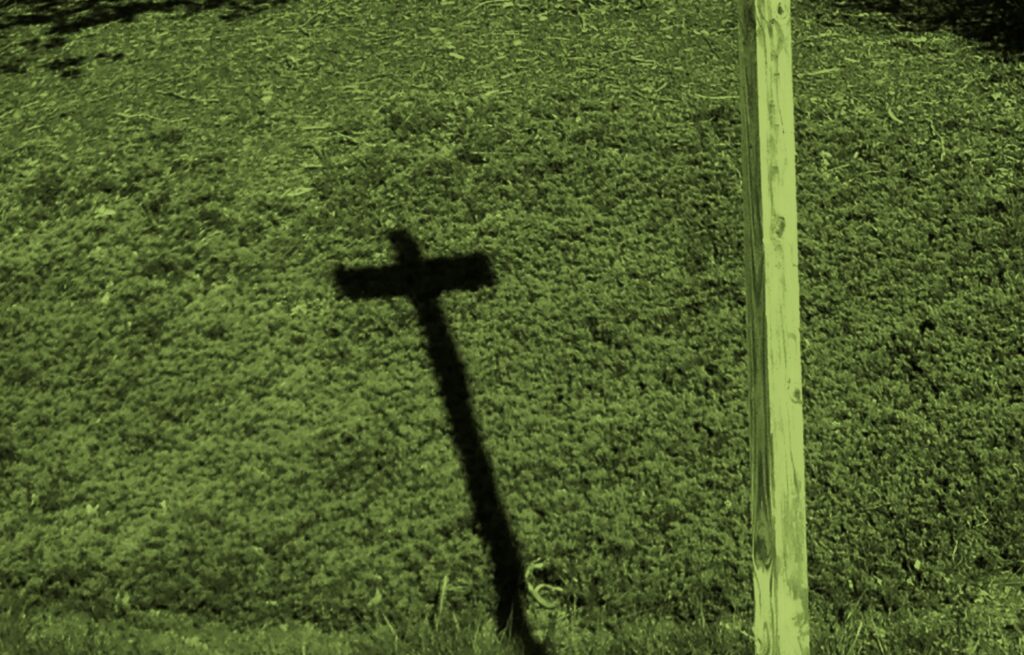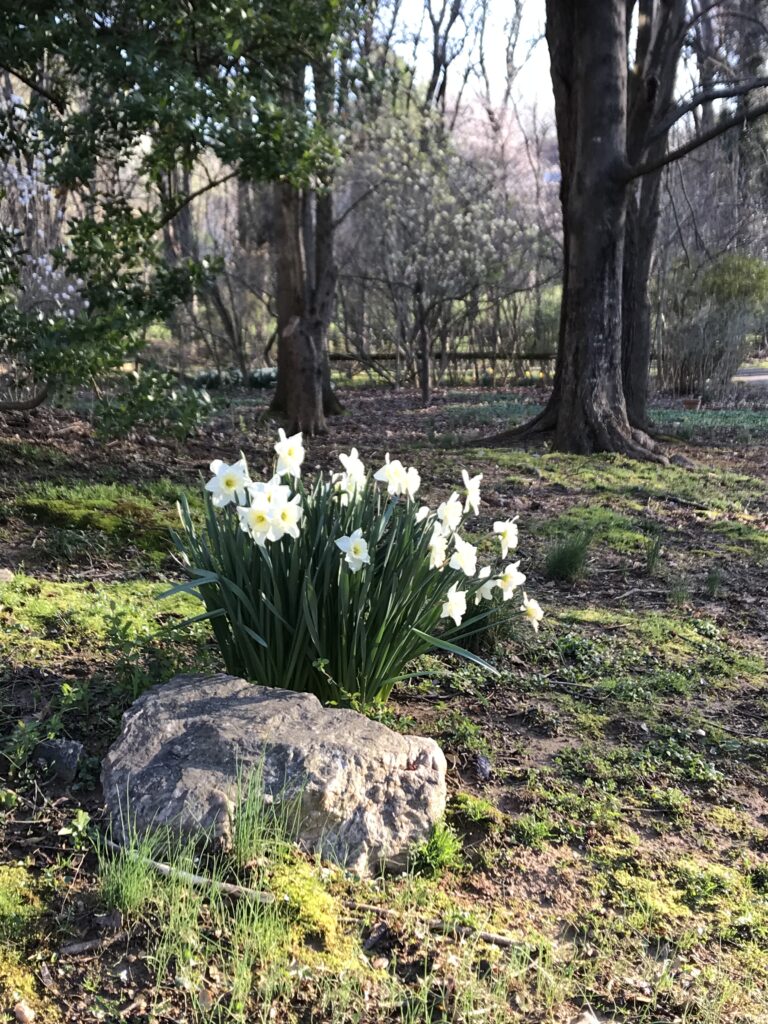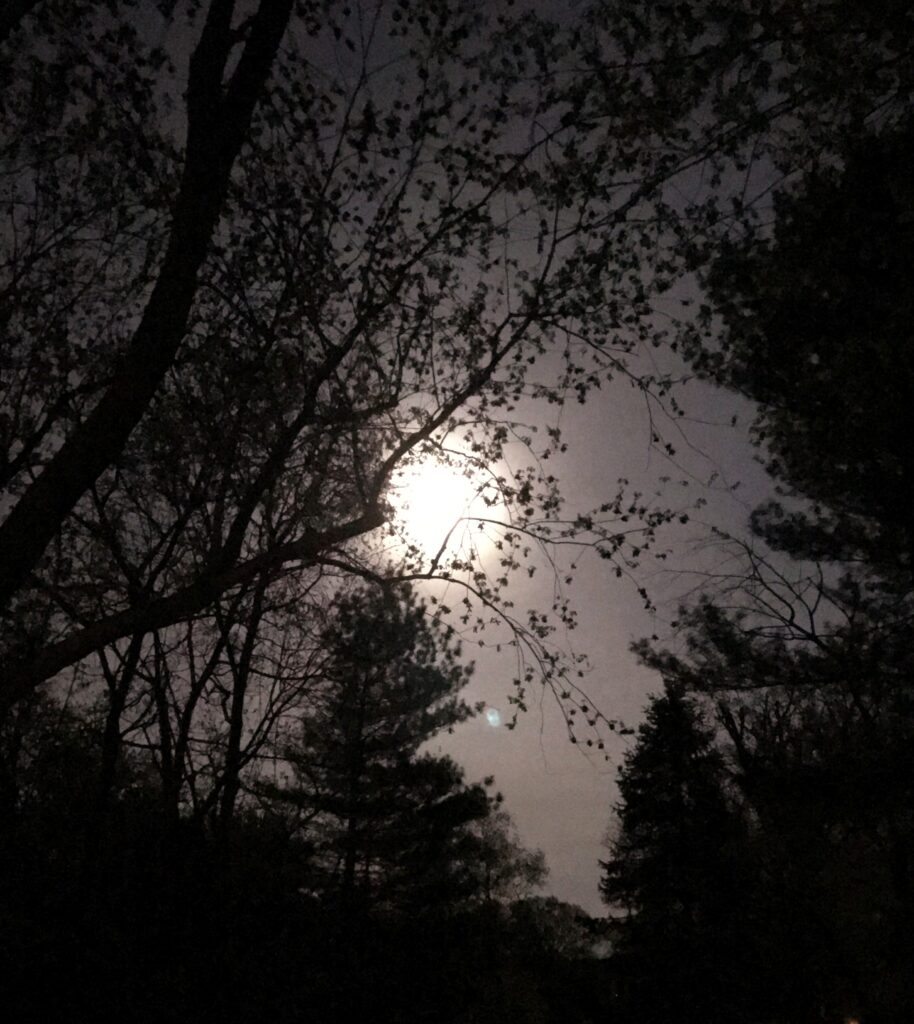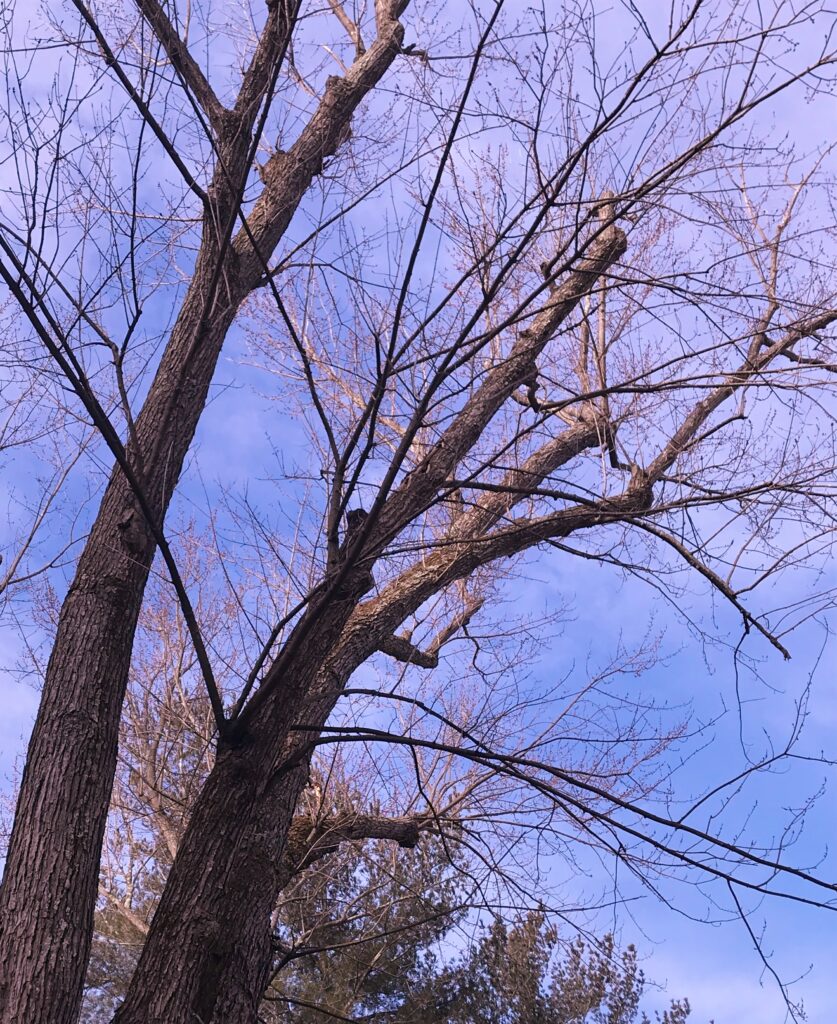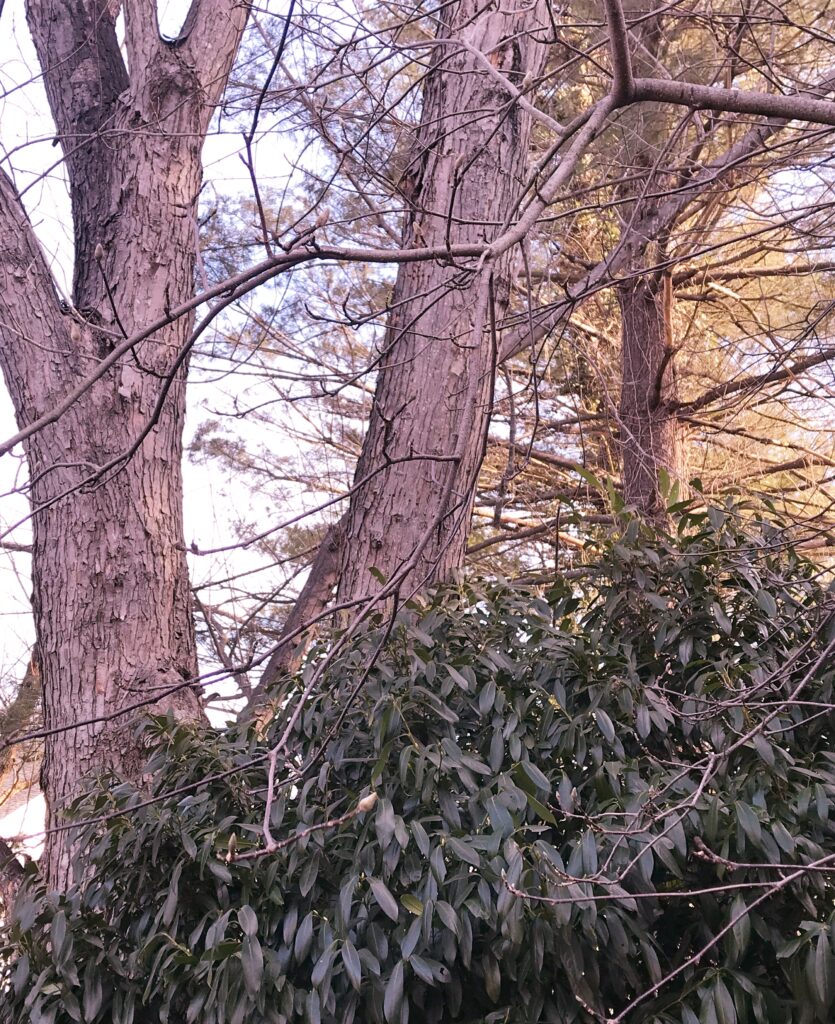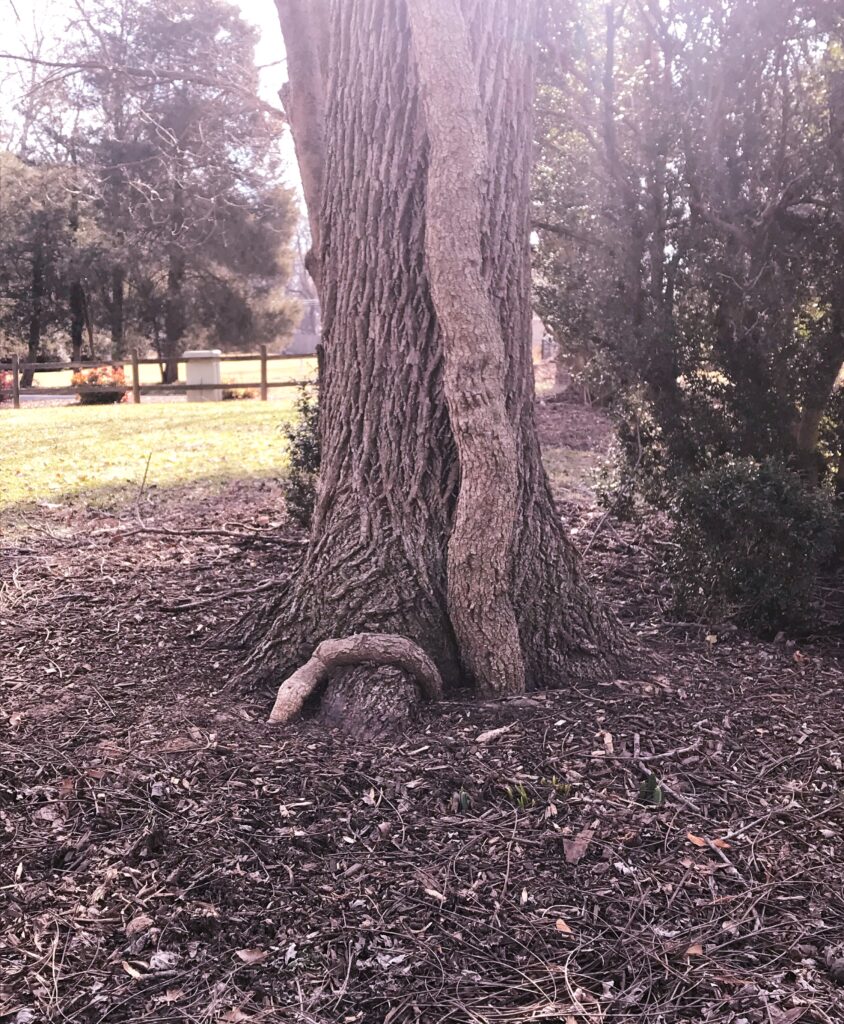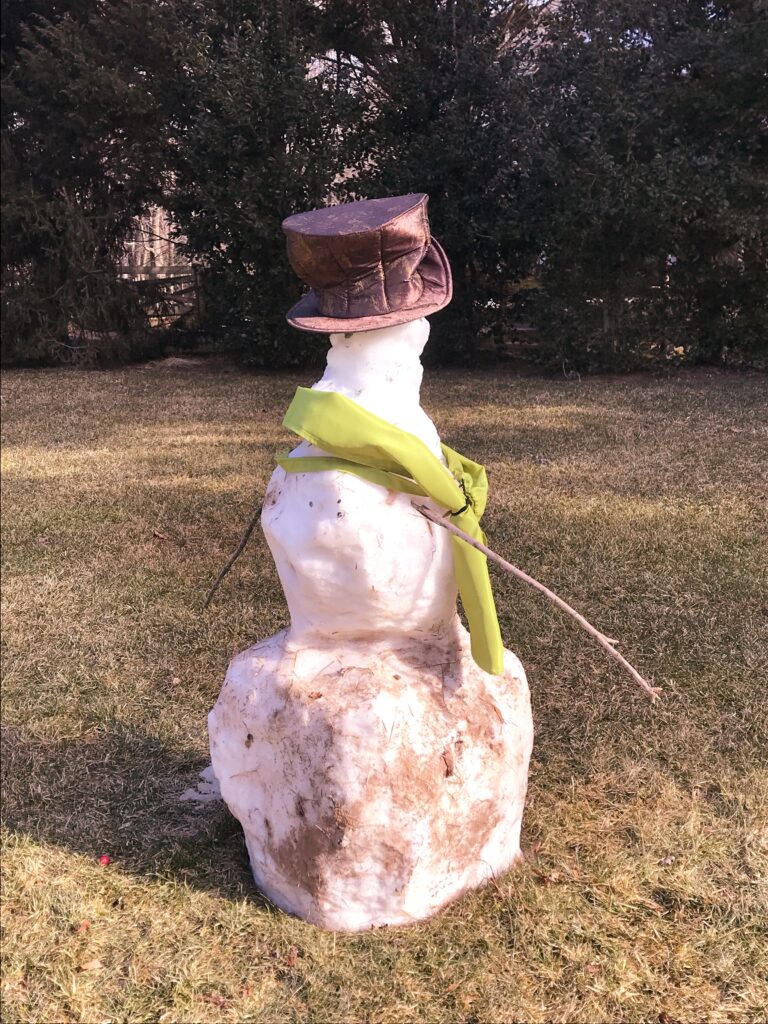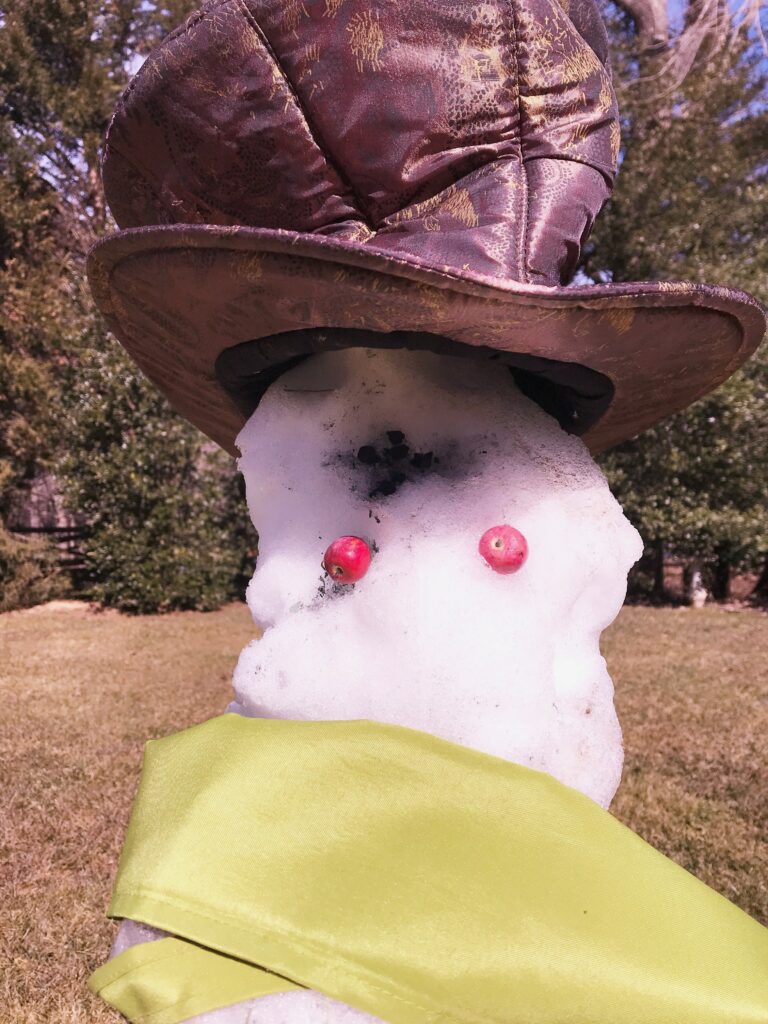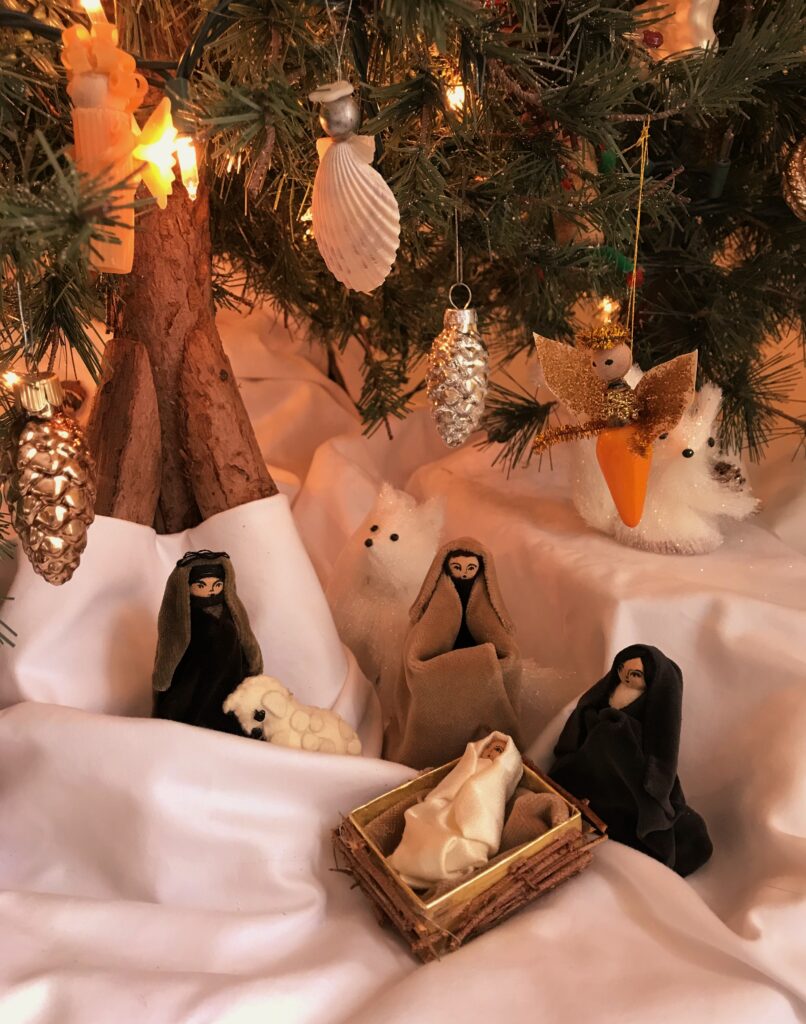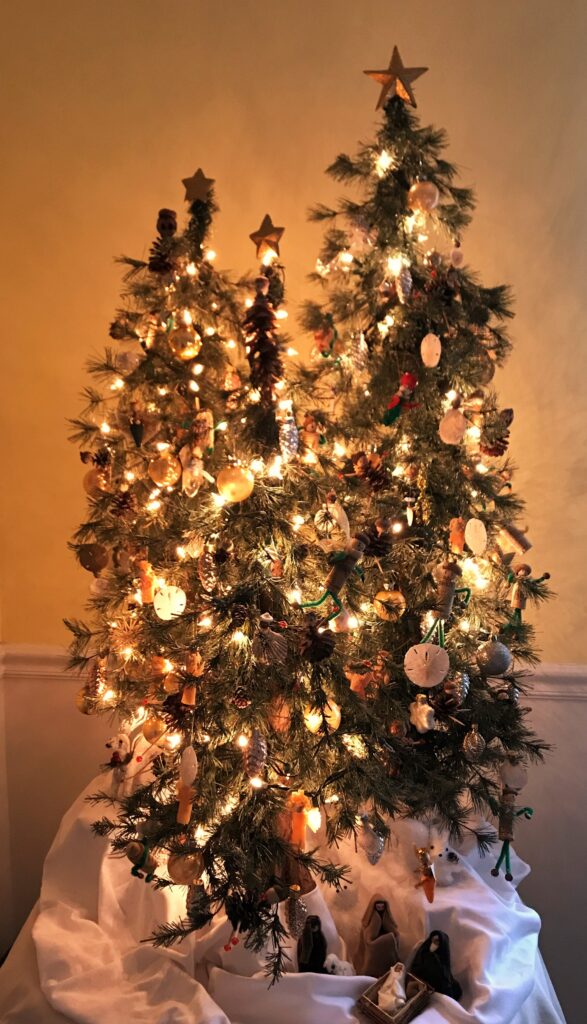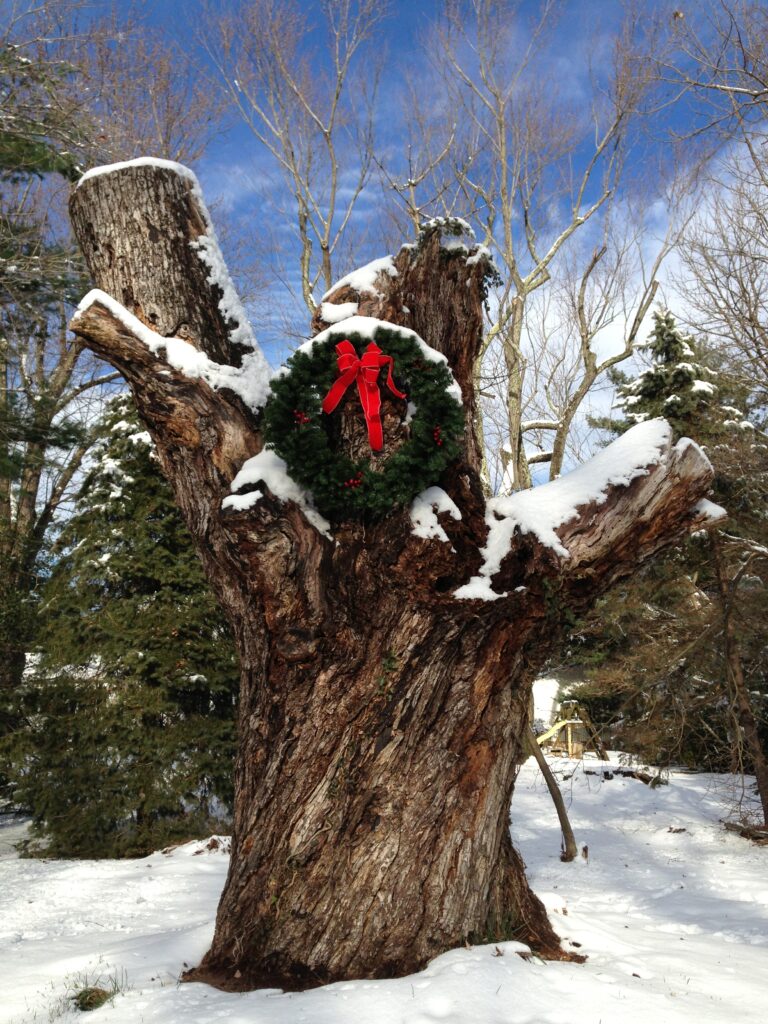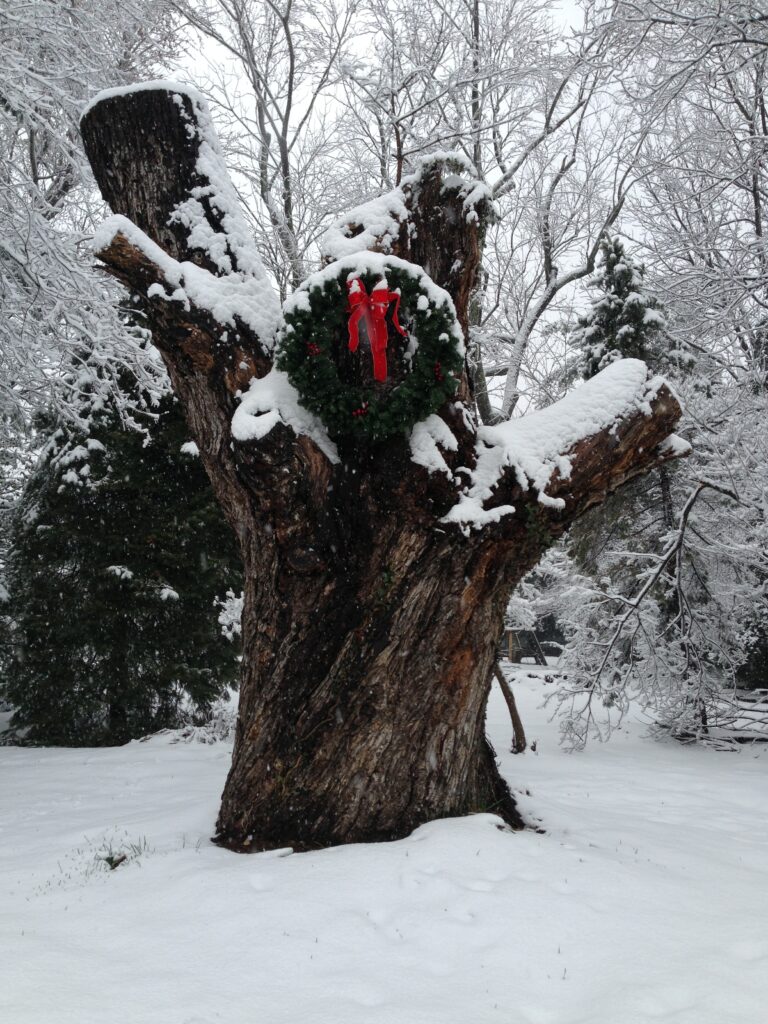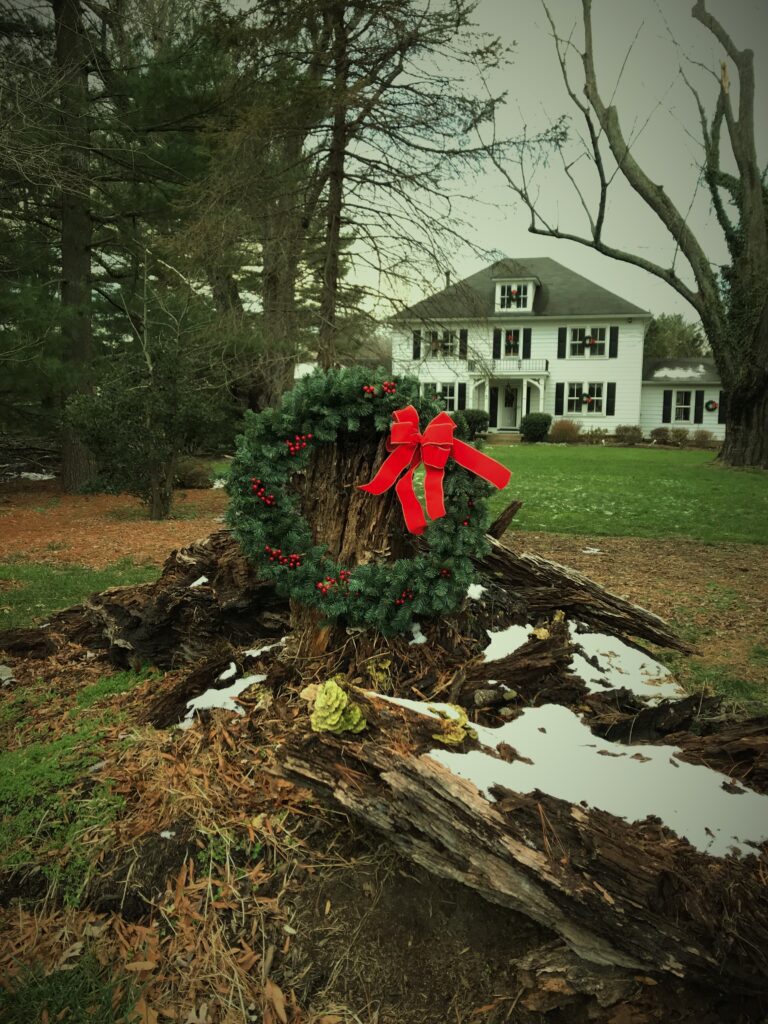Hats off to all the men who make the little people in their lives feel welcome, loved and safe, the way I felt in my dear daddy’s arms. Cheers to the good guys who have the strength and courage to be kind, nurturing, supportive, and occasionally vulnerable. May the blessings you provide be returned to you with interest. Happy Father’s Day, fathers and fatherly men!
Category Archives: Community
On The Road Again, and Back into the World
We did something highly unusual recently. Something we hadn’t done for close to two years. We packed the car and drove across several state lines to visit relatives for the long Memorial Day weekend. Thanks to the Covid vaccines, we could do so without fearing dire consequences. We had taken another major step the week before, when we attended our daughter’s graduation from the University of Virginia. We were there, in person, on-site! And when D returned home a few days later, we didn’t require her to go into a period of quarantine in our home office. We’re gradually easing back into something akin to pre-Covid “normal.”
My husband’s intentions to visit his parents more regularly had been foiled by the pandemic. He and my daughter had also been eagerly awaiting the opportunity to get some ice time with our young hockey-playing nephews. So H’s hometown of Rochester, New York was our first out-of-state family destination. At Bill Gray’s Iceplex in Brighton, H and D matched skills with the boys for an hour of non-stop action. My sister-in-law and I, in our figure skates, passed the occasional errant puck around and served as videographers.
The Eerie canal village of Spencerport, where H’s sister and her family live, was as charming as I remembered it from our last visit over the Memorial weekend in 2019. The lift bridge, which raises to allow the passage of larger boats, had been freshly painted. Bright flowering baskets hung from shop windows. Our nephews have become enthusiastic fishermen during the pandemic. They breathlessly described to us the many fish that inhabit the canal. On a cold Saturday morning, undeterred by the icy wind blowing over the water, they proceeded to catch a wide range of examples. “A pumpkinseed? Really? That’s a fish?,” I asked the boys, thinking I’d heard wrong. Yes, indeed. A small and colorful speckled sunfish. Kids are such fountains of knowledge.
As much as my husband enjoys speeding across the ice in pursuit of a hockey puck, I like a brisk stroll through picturesque neighborhoods. I had been looking forward to walking again along Spencerport’s tree-shaded streets lined with beautifully tended old homes and historic churches. I kept falling behind my daughter and sister-in-law as I paused to take photos. So many captivating architectural details, so little time.
The lamp posts on the main streets of the village were again decorated with flags and Hometown Heroes banners. Photos of our military men and women currently serving in various branches of the armed forces gazed down on us. Although the images were different, the group was just as youthful-looking as those of a previous year. Some were smiling. Others had adopted more serious expressions. All, I expect, must have been feeling a sharp mixture of anxiety and optimism during those photo sessions.
Their faces look down on the quiet, peaceful streets of home. Yet the real young men and women are far away, in places where turmoil reigns and peace is elusive. Every time I think of pretty little Spencerport, with its inviting sense of homeyness, I think of these hometown heroes. I pray that they return whole and healthy to their families.
I pray also that we civilians do our part to earn that name. May we not forsake our civic duty. May we pursue truth and learn from it, especially when it is painful. Especially when it reveals shortcomings that need to be addressed. May we actively work toward justice and peace for all people. May our country, our democracy, remain worthy of our pride and of the service and sacrifice of our military men and women.
Memorial Day 2021
O beautiful for heroes proved in liberating strife,
Who more than self their country loved, and mercy more than life!
America! America!
May God thy gold refine, till all success be nobleness,
and every gain divine.
America! America!
God mend thine every flaw, confirm thy soul in self control,
thy liberty in law!
–America the Beautiful
words by Katharine Lee Bates, 1904
music by Samuel A. Ward, 1888
Wishing you and your family a peaceful, beautiful Memorial Day. May you have the freedom to gather with those you love. And may we honor and remember all those who gave their service and their lives for our ability to do so.
Looking at Brood X, Seeing Ourselves
Temperatures are climbing into the 90s here in the DC suburbs , and the cicadas are getting the message: it’s time. The pace of their emergence is accelerating. Each morning brings a bigger crowd of Brood Xers in various stages of their short above-ground lives. Yesterday, for the first time, we noticed that their characteristic buzzing could be heard in our neighborhood. At first, it might be mistaken for the roar of highway traffic a few miles away, or heavy machinery droning in the distance. Today it’s much louder. Our daughter could hear the sound over the phone as I stood on the porch talking with her. We were discussing the logistics of our attending her graduation ceremony tomorrow in Charlottesville at the University of Virginia. The last appearance of Brood X coincided with her Kindergarten orientation. Taking stock of one’s life in seventeen-year spans is a daunting exercise, one I may attempt in a future post.
As our yard fills up with more cicadas, I notice that they seem smaller and more delicate than I remember. Was it just because in our daughter’s little five-year old hands, the insects looked larger in 2004? I don’t think so, because I saw them in my full-grown hands, then and now. Is it that our our memories naturally tend toward exaggeration and hyperbole? I don’t know. I only know that I was expecting bulkier, more substantial creatures. Those I’m seeing now seem almost dainty.
Today in 2021, I’m struck by their vulnerability. Maybe I feel this way simply because I’m older. Or because the covid pandemic has kept reminding me, and all of us, for over a year, of life’s fragility. I certainly don’t remember encountering so many struggling cicadas. Repeatedly, I come across those having difficulty emerging from their shells. They appear to be stuck, not quite in and not quite out. Did the long spell of cooler-than-usual weather adversely affect their ability to molt? Others have successfully exited their exoskeletons, but they’re physically challenged in various ways. A wing is twisted, folded, malformed or too small. I found one that appeared to be miniature in all aspects except for its head and eyes. What a cutie it was, with a short body and tiny wings that looked to be edged with frills and coated in golden dust. And all around, I see cicadas that appear to be perfectly formed, yet having considerable difficulty adjusting to the new life phase. With every glance at our front porch, I see one or more flipped on its back, legs moving frantically in the air. I see some that have lost half their body to a predator, yet continue, doggedly, to crawl. Our lawn teems with nymphs and the newly molted attempting to maneuver through a hostile terrain of grass blades. I avoid walking through the yard, even though I want to check out the cicada action around our silver maples. My husband debates how best to time his mowing of the lawn. When will the massacre it entails be less pronounced?
I’m hoping that once the Brood X onslaught is in full force, there will be so many cicadas around that those facing hardship will be less evident. With temperatures expected in the high 80s over the next week or so, we should soon be entering peak emergence. Until then, though, I’ll continue to commiserate with all the struggling cicadas I see. I will attempt to rescue some, just as I occasionally move a worm from the middle of the street. It’s not that I place such an extraordinarily high value on the lives of these insects. It’s not that I deem them more important than people. Quite the opposite. It’s that, in their struggles and frailties, I see those of humankind. In their vulnerability, as well as in their persistence, I see the human condition.
This afternoon, on a very slow, hot walk with Kiko, I came across a cicada in the road. It looked healthy. I picked it up, and it buzzed vigorously in my hand. I took the perky little guy to a nearby tree, where he left my finger easily and began walking up the trunk with confidence. I saw, or imagined, a peppy spring in his step. This one would seize his hard-won day in the sun. I returned home feeling optimistic, for Brood X as well as for my human brothers and sisters.
And They Emerge! Brood X Sightings Begin
They’ve been underfoot outdoors, all around us here in Northern Virginia, for seventeen years, leisurely sipping the sap from grass and tree roots. Most of that time, they’re in cozy tunnels eight to twelve inches below ground. About a month ago, they moved up closer to the surface, where they wait until the ground temperature feels right. I saw my first representatives of Brood X yesterday morning on my neighbor’s front steps. I spotted several more on our iron fence this afternoon. Today, there will likely be more. I know from past experience that our immediate area will soon be rich, almost beyond imagination, in cicadas.
In the next several weeks, it will become close to impossible to avoid the orange-veined brothers and sisters of Brood X. They’ll be everywhere, looking out onto this bright new world with their bulging red eyes. They’ll be moving slowly, if at all. Their large wings don’t seem to be quite big enough for their lumbering bodies, and their flight is awkward and haphazard. They apparently don’t spend enough time in a winged state to master the art of flying. I’m reminded of a new driver making a first clumsy attempt to drive a car with standard transmission.
Look down in non-grassy areas and you may see the perfectly round, dime-sized holes the cicadas leave when they emerge from their subterranean long-term leases.
You may see some cicada “chimneys,” as well. These are the domed cylindrical mud towers the insects build atop their holes as protection during wet weather.
Near dusk, you may see milky white, ghostly cicadas crawling across the ground. These are the newly emergent nymphs, with as-yet undeveloped wings.
The nymphs find a perch on which to anchor themselves as they gradually shed their exoskeletons. These copper-colored shells will soon be omnipresent on tree trunks and branches. And then they’ll start to pile up around the bases of trees.
For a while, still, we can enjoy our friends from Brood X a few at a time, when they are at their endearing best. Appreciate this early stage. It won’t last long.
Mission Accomplished! (Good Friday 2021)
“It is finished!” And he bowed his head and released his spirit.
The Gospel of John (19: 30) records these final dying words of Jesus, spoken from the cross. A quick reading might prompt one to hear this utterance as the sad lament of defeated man. Not so fast, though. The Gospel writers Matthew (27:50) and Mark (15:37) don’t report Jesus’s last words. They tell us only that he “shouted out again” or “cried out again in a loud voice” before breathing his last. If we use all three accounts as evidence, what the Son of God likely said was a single word evoking not loss, but satisfactory completion. He spoke in Aramaic, but the original Greek of John’s gospel translates it as “tetelestai.”
This word would have been familiar in several contexts to the people of first-century Palestine. Having completed the last task of the day, a worker might tell his boss, “Tetelestai.” An artist, putting the final touch on a painting, might use the same word. A debt paid in full would be stamped “Tetelestai.” For Jews, the word would have been the Greek equivalent of a familiar Hebrew phrase announced by the High Priest each year on the Day of Atonement. After offering the proper sacrificial animals at the altar of the Holy of Holies at the Temple in Jerusalem, the priest emerged to tell the assembled crowd that God had accepted the sacrifice of the people.*
Jesus’s final cry before dying was therefore no whimper of pained surrender. Instead it was an exclamation of triumph.** The various frames of reference for “tetelestai” mentioned above are all helpful in understanding Jesus’s use of the word and what his death means for us. His earthly work is done, the masterpiece completed, the debt paid, the perfect sacrifice offered and accepted. In other words, “Mission Accomplished!”
Three of the Gospels include an often overlooked, but immensely significant detail that stands as proof of the change ushered in by Christ’s death. According to Mark 15: 38: “And the curtain in the sanctuary of the Temple was torn in two, from top to bottom.” This was the curtain in the Temple of Jerusalem which separated the Holy Place from the Most Holy Place. This sacred space housed the Ark of the Covenant, considered by the Jewish people to be the very throne of God. Only priests could enter the Holy place. The High Priest alone entered into that sanctified inner realm, the Holy of Holies, and then, only once a year, on that holiest of all days, The Day of Atonement, or Yom Kippur.
Although sometimes referred to as a veil, the Temple curtain was no delicate, gauzy thing that might have ripped easily in a gusty wind. It was a heavy, brocaded cloth, woven with images of protective angels. Only an intentional act of great force could have caused the Temple curtain to be torn fully asunder. Both Matthew and Mark tell us that it was divided from top to bottom, as though from on high. Human hands had no part in this. This was God’s work.
Having destroyed the barrier to the Holy of Holies, God invites his people to approach him directly. Middlemen are no longer needed. The ultimate gift of atonement invites us to be “at one” with God. Having willingly offered his own life for our sins, Jesus and his father tell us that animal sacrifices are a thing of the past. The perfect Lamb of God has paid our debt in full. We are redeemed. Tetelestai!
This is what Jesus referred to earlier at the Last Supper, when he took the cup and told his disciples, “This is my blood of the new covenant, poured out for you and for many for the forgiveness of sins. “(Matthew 26:28) We, and all generations before and after us, are among the many. It was on this same night that Jesus reduced the entirety of his message to this one essential commandment: “Love each other. Just as I have loved you, you should love each other.” (John 13: 34) See yesterday’s Maundy Thursday post.
So, what then is required of us in these days of the New Covenant? It’s simple. Accept the gift that was given to us in love by our brother and savior Jesus. Admit our shortcomings and try to do better. Focus less on ourselves and more on others. Get back to basics: “Do justice, love mercy, and walk humbly with your God.” (Micah 6:8) Think about that. We have a God who truly desires to walk with us. He wants to walk the road with us, to share in our sufferings as well as in our joys. And if we’re willing to walk with God day by day, in good times and in bad, loving him, loving our neighbor as we love ourselves, we usher in his kingdom here on earth, as it is in heaven.
The Temple curtain has been torn. No barrier remains between us and our loving, faithful God. Tetelestai!
For I am sure that neither death, nor life, nor angels, nor principalities, nor things present, nor things to come, nor powers, nor height, nor depth, nor anything else in all creation, will be able to separate us from the love of God in Christ Jesus our Lord. (Romans 8: 38-39)
*Michael Maynard discusses the various meanings of “tetelestai” here: It is Finished. . .The Last Words of Jesus, June 25, 2017.
** See Final Words from the Cross, by Adam Hamilton, pp. 103-104. Our church’s Lenten study (on Zoom) has focused on this insightful book.
Our Time together is short: Here’s What’s Important (Maundy Thursday 2021)
Today is Maundy Thursday, the day in the Christian calendar that commemorates Jesus’s Last Supper. The unusual word “maundy” (not Maunday) comes from mandatum, the Latin for command, because we remember the new commandment that Jesus gave his disciples on his final night with them. I wrote this post two years ago, but it’s as relevant today as it was then. Perhaps, more so, during Year II of the covid pandemic. Why not do our part in changing our troubled world for the better by listening to, and following, Jesus’s valuable life instructions?
On the night of his betrayal and arrest, Jesus gathered with his disciples for one last time to share the Passover meal together. He knew that his life on earth was drawing to a close. He had tried to explain to his dearest friends that he would soon be facing death, and doing so willingly. But the disciples didn’t understand. Probably some of them were expecting to witness a magnificent earthly triumph. Judas, the betrayer, may have been counting on such a victory. None of the disciples, it seems, were expecting their friend, teacher and Messiah to die an ordinary criminal’s death on the cross.
But the group must have been fearful and confused. They were back in crowded, dangerous Jerusalem, where Jesus’s life had been threatened multiple times during clashes with the Jewish religious leaders. And so, on that fateful final night, Jesus had the full and rapt attention of his disciples. He chose his words, and his actions, with care.
According to the Gospel of John (13:1 – 17), after the meal, he did something completely unexpected: he got up from the table and began to wash the feet of his friends. In those days, traveling, for people of ordinary means, meant walking, in sandals, or even barefoot, along dusty, dirty roads, through fields and stretches of sandy wilderness. A servant typically washed the feet of guests as they entered a home. If there were no servants, guests usually washed their own feet from a basin near the door. John the Baptist refers to this practice when asked by Jewish leaders if he is the Messiah. According to John 1:27, he replies, “I baptize with water. Someone greater stands among you, whom you don’t recognize. He comes after me, but I’m not worthy to untie his sandal straps.” The disciples were clearly uncomfortable with their leader and teacher washing their dirty feet. Had foot washing been done upon entering the upper room that night? It’s uncertain. Maybe there had been no basin set up for the purpose until Jesus poured water into one, as mentioned in John 13:5. The Pharisees had criticized Jesus when they noticed that some of his disciples failed to wash their hands before eating (Mark 7: 1-5). Certainly, Jesus’s focus was not on Jewish rituals of purity. External, physical cleanliness was evidently not one of his primary concerns. He may not have been a stickler for foot-washing prior to that last gathering.
The disciple Peter’s reaction supports this (John 13: 6-11). Peter was fiery, passionate and impulsive. Like many of us, he was often a bit dense. He couldn’t stand the idea of Jesus abasing himself to wash his feet. Foot washing was the job of an underling, a slave. Peter jumped up and exclaimed, “You’ll never wash my feet!” When Jesus replied, “Unless I wash you, you won’t belong to me,” Peter was all in. “Then wash my hands and head as well, Lord, not just my feet!”
Jesus went on to explain his puzzling behavior. “Do you understand what I was doing? You call me ‘Teacher’ and ‘Lord,’ and you are right, because that’s what I am. And since I, your Lord and Teacher, have washed your feet, you ought to wash each other’s feet. I have given you an example to follow. . .Now that you know these things, God will bless you for doing them.” (13:12-15, 17).
Jesus wanted his disciples to understand that he had in mind much more than literal foot washing. Following his example is to mean humbling oneself in order to serve and help others. To further drive home his point, he continued: “So now I am giving you a new commandment: Love each other. Just as I have loved you, you should love each other. Your love for one another will prove to the world that you are my disciples” (13:34-35).
Jesus had spent three years traveling with this rag-tag group. They’d heard him teach and preach, seen him heal the sick and cast out demons. On three separate occasions, he’d even restored the dead to life. The disciples had been with him as he confronted the Jewish authorities and challenged their interpretation of the Law. Sometimes his words and actions had been difficult to comprehend. But on the night before his death, Jesus summed up the essence of his ministry in the simplest of terms: Serve others. Love others. Just as I have served and loved you, so you should love others.
Let’s take this Maundy Thursday message to heart. Let’s heed the wise counsel of our dear brother Jesus. Do our best to follow his example. Try to model his caring, compassionate behavior. We won’t always succeed. Sometimes we’ll backslide and act in ways that are selfish and petty. But let’s persevere. And change the world, little by little, through service and love.
Ash Wednesday 2021
It’s a bitterly cold Ash Wednesday here in Northern Virginia, as in much of the country. An icy breeze whips up from time to time. But the sun is shining, and at least perhaps until tomorrow, nothing frozen is falling from the sky. The weather seems appropriate. It’s conducive to imagining the joy and beauty of an ideal Easter morning while experiencing the big chill of Ash Wednesday. This is a day for a clear-eyed, head-on look at our mortality, a time to peer into the bleakness of what would have been, had it not been for God’s saving grace. It marks the start of Lent, the forty-day period leading up to Easter, during which prayer, repentance and self-denial are encouraged. Lent’s Biblical basis is Christ’s retreat to the wilderness to commune with the Father in preparation for his ministry.
If you venture out today, you’ll probably see messy smudges on some foreheads. Our church and others in our area are offering do-it-yourself ashes this year because of the pandemic. So, what’s the deal with the ashes? It’s because of these words from Genesis 3:19, declared by God to Adam and Eve, just before He ushered them out of Eden, the paradise garden He had intended as their eternal, blissful home.
You are dust, and to dust you shall return.
Tough words from the Creator and landlord. What did the privileged first couple do to make God so angry? Incensed enough that He sent the two, created in His own image, out into desolation, to eke out a living through toil and pain?
Many of you who didn’t grow up attending church and Sunday School, along with some of you who did, no doubt consider the saga of Adam and Eve just another myth for the simple-minded who are ready to believe anything. Whether you see it as God’s literal truth, an interesting folk tale, or something in between, it’s a powerful story worth contemplating. Here’s my take on the Fall and its particular significance on Ash Wednesday.
Adam and Eve lived in a glorious garden created by God, suffused with His divine light, life and love. They had full-time leisure, full-time luxury. God walked with them there in the garden. The trees dripped with delicious treats, theirs for the easy picking. All except for the apples on one tree. A tree with an impressive-sounding name: The Tree of the Knowledge of Good and Evil.
Life was wonderful. Life was beautiful.
Among the friendly and fantastic creatures of the garden, there was a serpent. He was wise and wily, and he knew about that whole free-will thing. Indeed, he owed his very existence to what he saw as the weak link in God’s great plan. The serpent looked with contempt upon the innocent contentment of the two humans. He realized the fragility of the thread that kept them in their lovely home. It wasn’t long before this scaly Con Guy Supreme made his move. Appealing to Eve’s pride, he offered an opportunity for further greatness. Knowledge equal to God’s was at her fingertips, but God selfishly chose to keep this power to Himself. She deserved better, didn’t she? So Eve ate from the tree. Adam, who apparently needed no convincing, munched long complacently.
God found out. He wasn’t happy. Paradise was lost, for the taste of a forbidden fruit. We may think we would have known better. But probably not. Like Eve, we might have been tripped up by pride. Or maybe, like Adam, we might have given very little thought to the matter. If Eve says it’s fine, it must be. In simply thinking we would have known better, it’s evident that we would not have. With free will comes the ability to make the wrong choice, a choice we tend to exercise repeatedly. Like Adam and Eve, if left to our own devices, our fate would be to wander in the dust.
But we are not abandoned, without hope, in a barren land. Paradise is still within our grasp, as these words from Mark 1:15 tell us:
Repent and believe the good news!
On Ash Wednesday, we confront the grim reality of our tendency toward pride, selfishness and petty meanness. On our own, none of us will ever be good enough to work our way back to Eden. But we don’t have to be. The Christ that was already present within creation since God spoke the universe into existence, the very Word of God described in John 1: 1 – 5, came to earth in human form. Jesus, fully divine yet fully human, took our sins upon Himself. As the spotless Lamb of God, the perfect sacrifice, He wiped our messy slates clean.
To accept Christ’s free gift of salvation, we merely need to acknowledge our wrongheadedness and to ask forgiveness. God’s forgiveness is granted for our willingness to repent; it’s not contingent on our going forward without a misstep. We are human; we will stumble and lose our way at times. We cannot be perfect in this lifetime, but we can desire to achieve perfection.
The Ash Wednesday ashes are marked on the forehead in the shape of a cross, the instrument of death that became the tree of life. Christ’s good news saves us from a future of ashy, dusty nothingness, replacing it with the promise of unimaginable joy in a paradise everlasting. We can’t even comprehend unending joy; our flawed human nature prevents us. But we will understand it fully, and magnificently, one day, I am convinced.
On this frigid Ash Wednesday, the sun’s rays fall on the tips of new green daffodil shoots in our yard, just barely visible in the photo above . We are reminded of the new life that comes of death, of the new birth offered to us without price. On this Ash Wednesday, look into the darkness of the ashes. Then give thanks for the love that pulls us back into the light.
After nearly a year of Covid hardships and precautions, many of us may be feeling as battered and unkempt as this snowman looks. The promise of Ash Wednesday assures us that our future is much brighter.
Most of the text of this post was previously published in Wild Trumpet Vine on March 6, 2019. The weather is much the same as it was then, and the photos are current.
Christmas Eve 2020
In the absence of a live nativity at our church this Christmas Eve in the time of Covid, I cannot offer my usual photos of curious onlookers mingling happily with the sweet-tempered camels Samson or Delilah. Or with their other charming cohorts, the brown burro, the velvet-coated humpback ox, the several sheep or goats.
Here instead is this little clothespin nativity that my daughter and I made together many years ago. Simple and humble, made from materials we already had, it seems especially appropriate this Christmas Eve. It points toward what’s important, what’s essential, on this night and every night. The message of Christmas is, in one word, love. Love embodied in a baby. A baby sent by God to grow up and model love not only to his human contemporaries, but to all future generations. The message is so powerful that it remains as vital today as it was 2,000 years ago.
It’s the love that mingles the divine and the human. It’s the love that shines in the darkness. And the darkness, including the darkness of a pandemic, will not overcome it.
For more on the Christmas message of love (and for photos of our live nativity friends), see last year’s post: The Timeless Message of Christmas Eve.
Deck the Tree stump (2013) + Update (2020)
In 2013 I wrote a post about decorating the tree stump at the edge of our front yard with a Christmas wreath. In the course of seven years, the stump has changed substantially, as most of us have. I didn’t hang the wreath the past two years, but this year it seemed fitting to do so. The original post appears immediately below, followed by the current update.
Deck the Tree Stump (2013)
This December, we hung a big wreath on the craggy silver maple stump in front of our house. It seemed like an interesting, if unexpected, spot for a wreath. And by decorating the tree, we could send a message to those who might see it as a business opportunity, as well as to those who think the stump is unsightly and wonder why we leave it standing. The wreath says, We love this old tree trunk, and we’re letting nature take its course.
Then I thought a little more about it, and the pairing struck me as even more appropriate in its juxtaposition of life and death. The stump is the opposite of the traditional evergreen Christmas tree. Firs and spruces, retaining the appearance of vitality through the winter, get the privilege of being cut down, hauled into our homes, strung with lights and ornaments, and left to wither and die. It’s tough work, being a symbol. Our maple, though, would be in no such danger. If intact, it would be gray-brown and leafless by now, like its neighbors in our yard. But of course, it’s a stump, a snag, and already dead. Yet it harbors vast, unseen colonies of creatures that go about the business of breaking down lifeless material. It won’t be long before nature’s course is run. The stump may not be here next year; its center is soft. All the more reason to decorate it this year.
My husband and daughter hung the wreath one weekend afternoon, as I was napping, trying to get over a persistent cold. When I trudged out to the road to see their handiwork, a new insight hit me.
I like to think that God works with us for good, despite ourselves, despite our selfish intentions and our vanity. I initially wanted to decorate the tree because I thought it would look pretty, if a bit odd. In truth, it was a way of declaring a certain pride in being different, in having the ability to see beauty where others see ugliness.
But once up, the wreath reminded me of a greater truth, of the essence of my Christian faith. Out of death comes new, transformed life. How better to say it than in the words of John 3: 16:
For God so loved the world that he gave his only Son, so that everyone who believes in him may not perish but may have eternal life.
And then the snow settled beautifully on the wreath and the tree, on the green and the gray, on the quick and the dead, like a blessing from above.
Update: The Remains of the Stump (2020)
The stump lasted far longer than I expected. But nature, human error, and cars have taken their toll. It’s in a vulnerable spot, close to the narrow road, on a particularly sharp turn that’s proven problematic for drivers time and time again. Several years ago one May morning we were awakened around dawn by a policeman at our door. He asked if that was our vehicle outside. “What vehicle?,” I heard my husband ask in a confused tone, after he’d finally made his way downstairs to the door.
“The one in the tree.”
“What?”
And sure enough, it appeared that a dark minivan had merged with the tree. While most of the stump remained, it must have been considerably weakened, as its decline soon accelerated.
Two summers ago while we were away on vacation, a little red Honda found its way quite forcefully into the stump, demolishing half of it. The section that remained no longer looked much like a tree, or even a stump. When that final piece gradually eased to the ground one day this fall, we barely noticed. Why not, one might ask, remove it, at this point? One answer is that, even as a pile of debris, it serves as a barrier for future wayward vehicles.
Last week, returning from a walk with the dog, I surveyed the battered remains of the once mighty silver maple. It, with five others, was planted the same year that our house was built, in 1920. (See The Silver Maples Say Welcome Home, April 2012.) Several large patches of ruffled pale green lichen had sprouted from the decaying wood. Even in its final stages, the tree continues to serve as evidence of the circle of life. (See Underfoot, and Easily Overlooked. . . October 18, 2013.) I thought of the big wreath hanging neglected behind the hockey nets in the garage. Why not, during this Covid Christmas season, decorate the vestiges of the tree as it’s in the process of transformation? The wreath on the ruins is, to me, a reminder that hope does indeed remain. We can have hope in human ingenuity and resilience during the darkest of times, proof of which is offered by, among other achievements, the development of highly effective Covid vaccines in record time. We can have hope in a divine and loving parent, who created not only maple tree and lichen, but also each one of us human children, unique in our blend of talents, strengths, weaknesses and inconsistencies. We were created for a life that increases in abundance as we love one another and rejoice in our differences. We were created for an abundant life that transcends the boundaries of this flawed and fantastic earthly realm.
. . .and hope does not disappoint us, because God’s love has been poured out on us through the Holy Spirit which has been given to us.
–Romans 5:5

